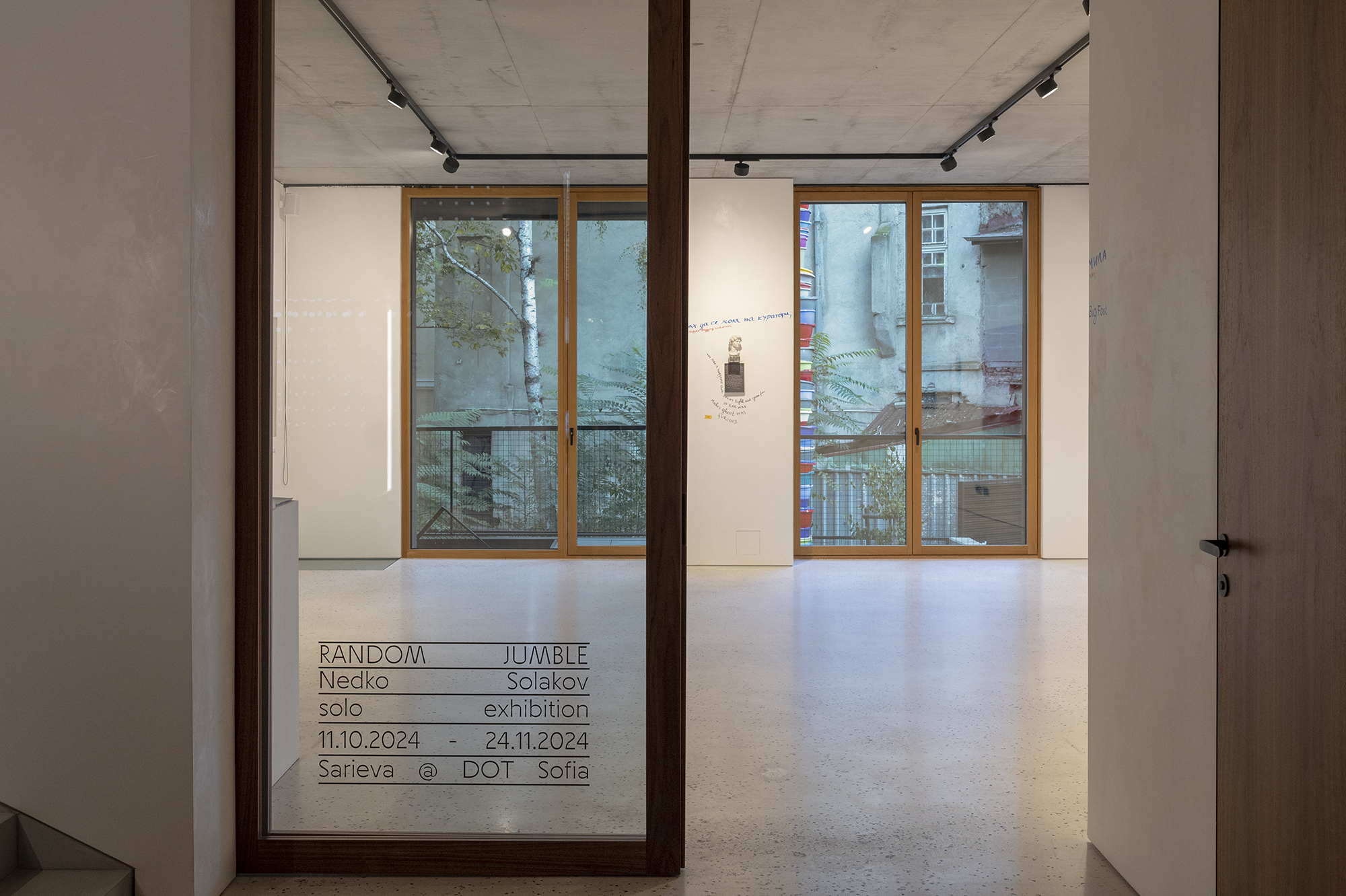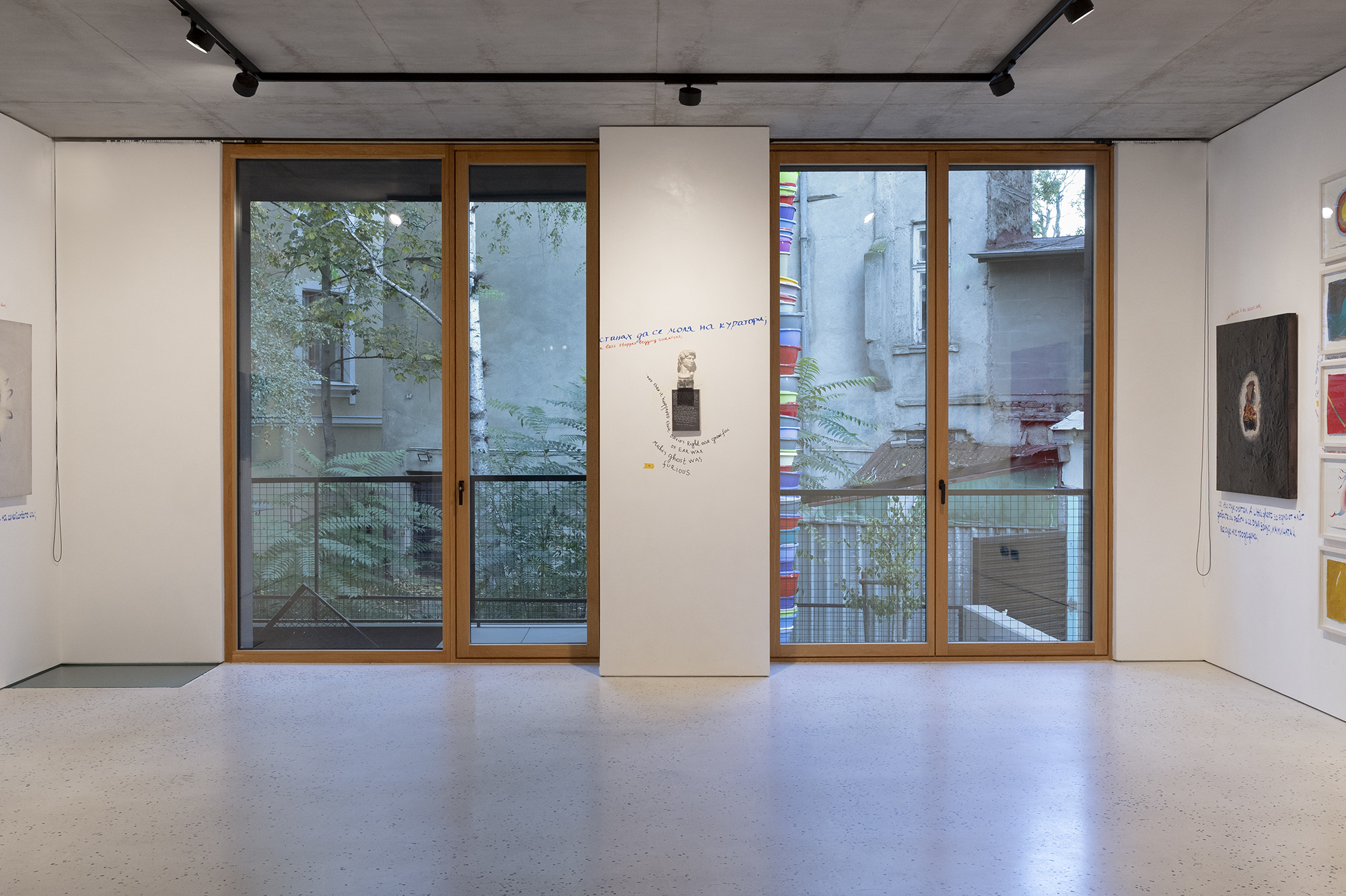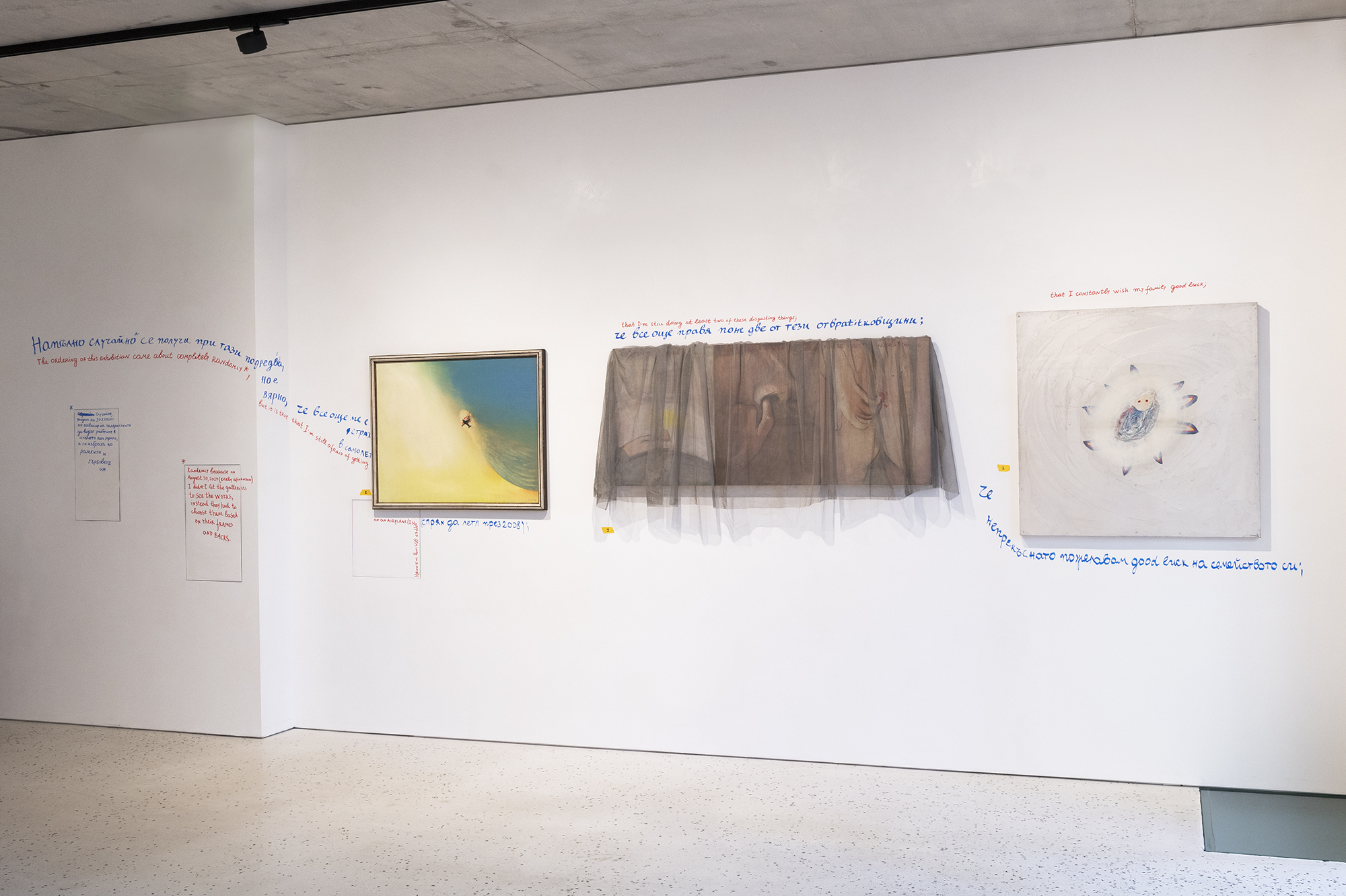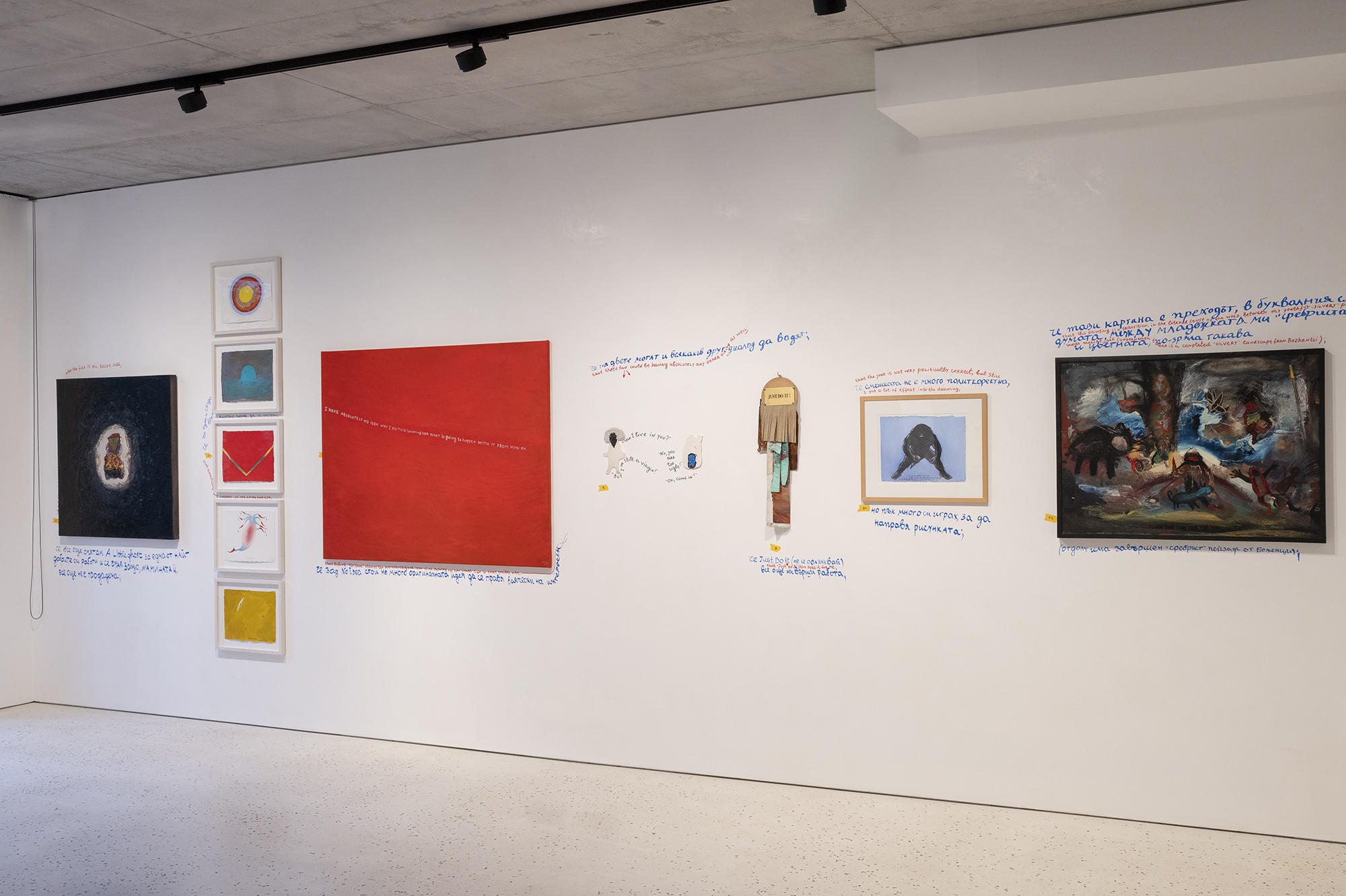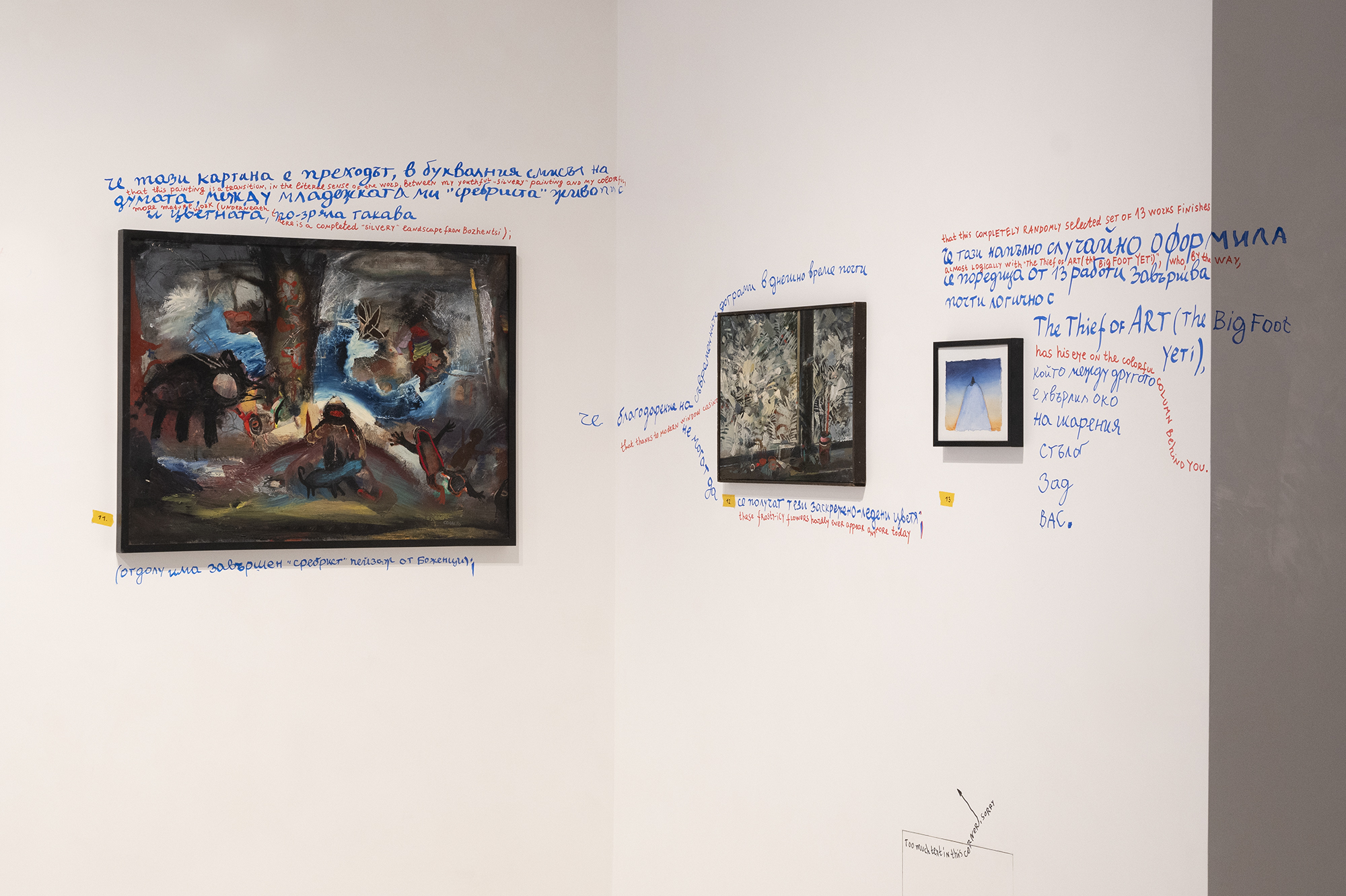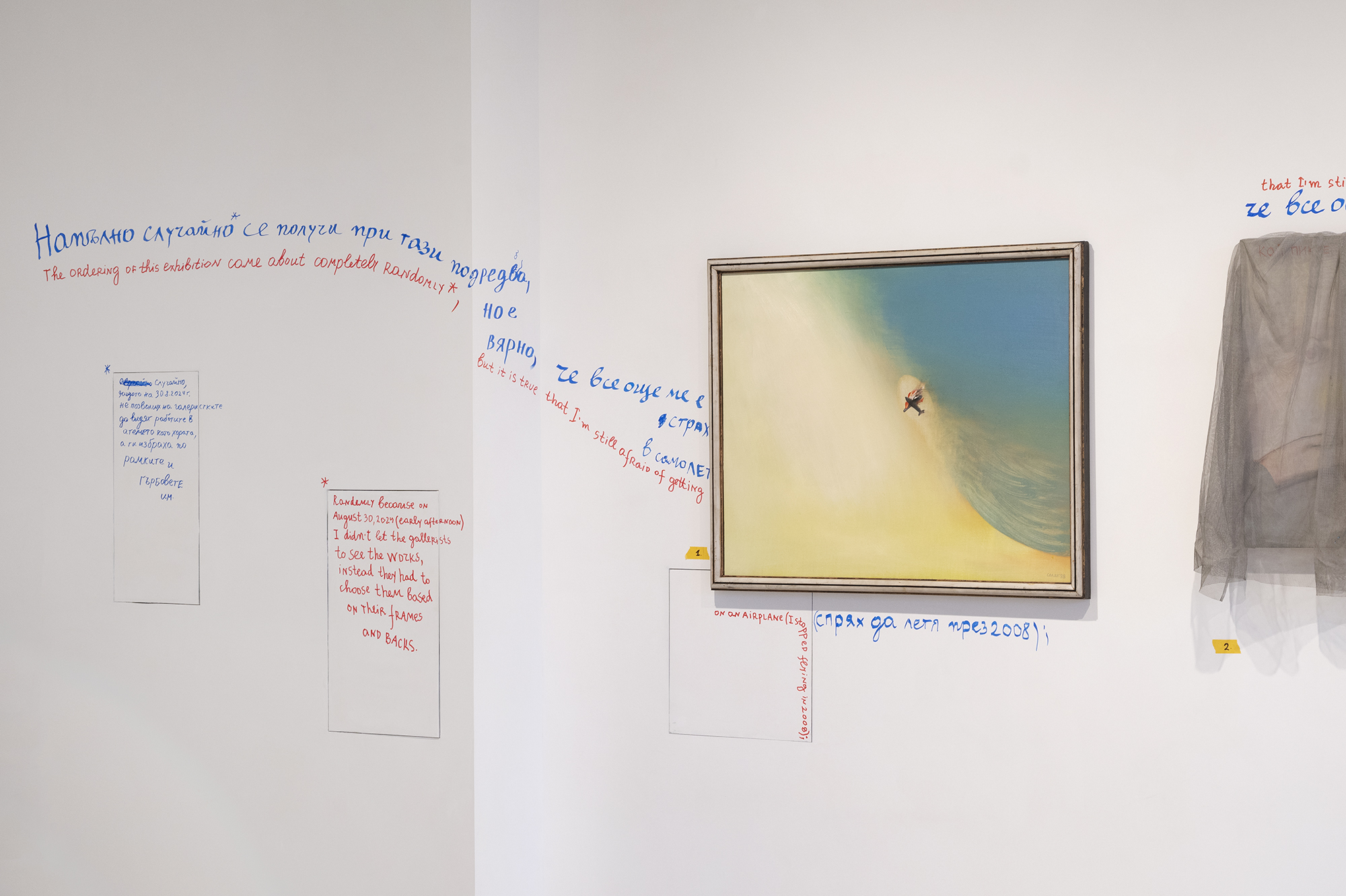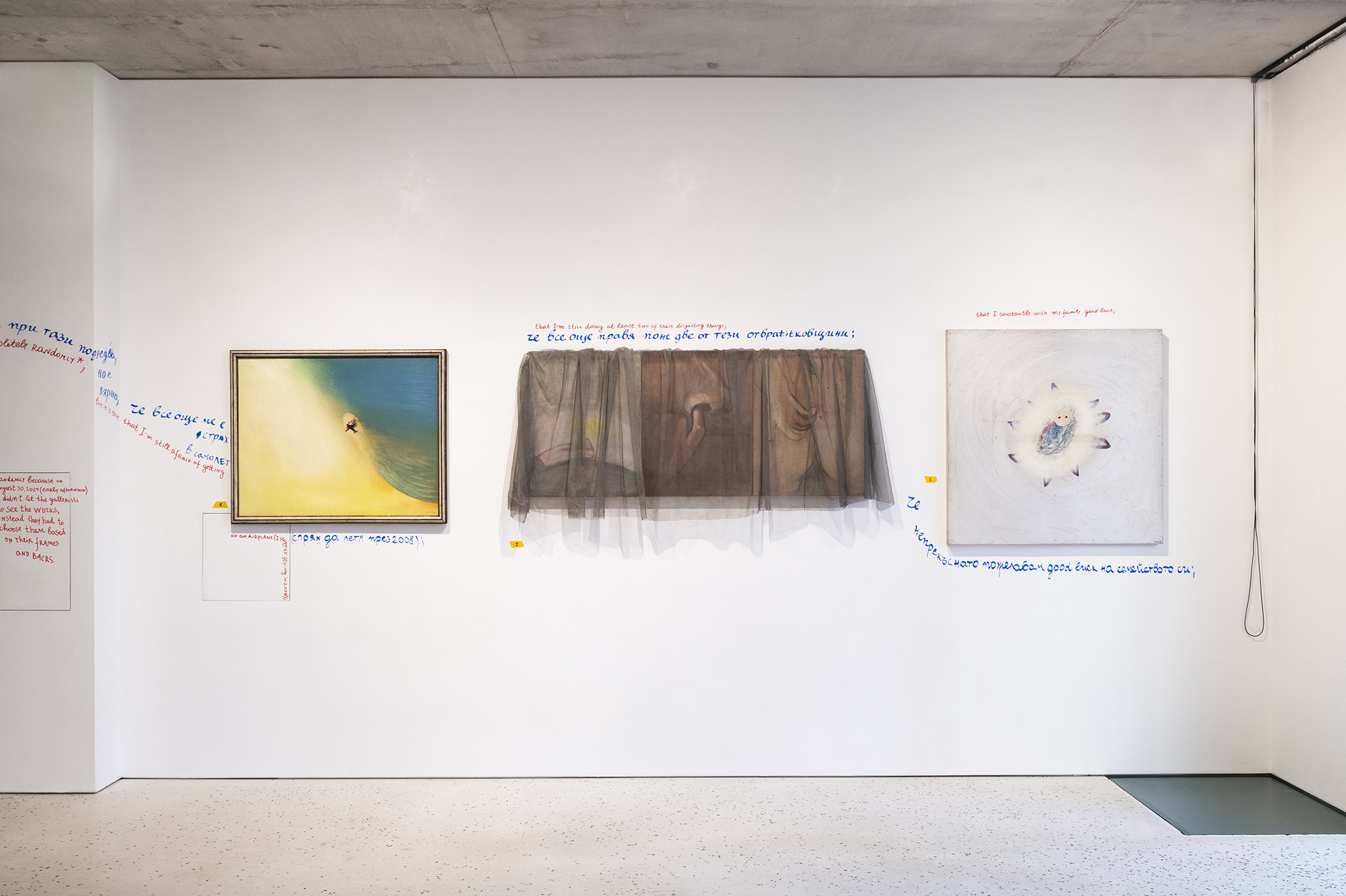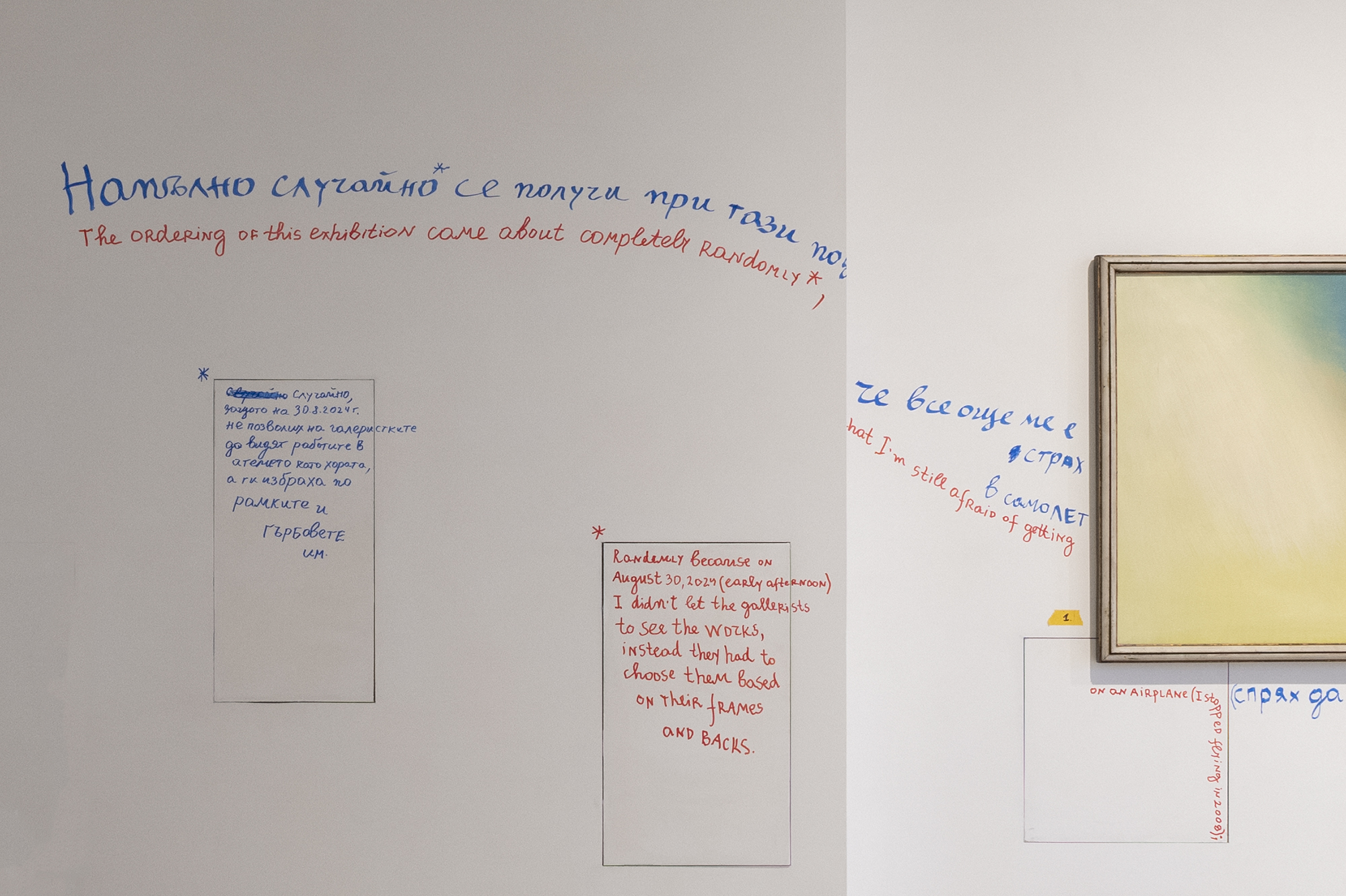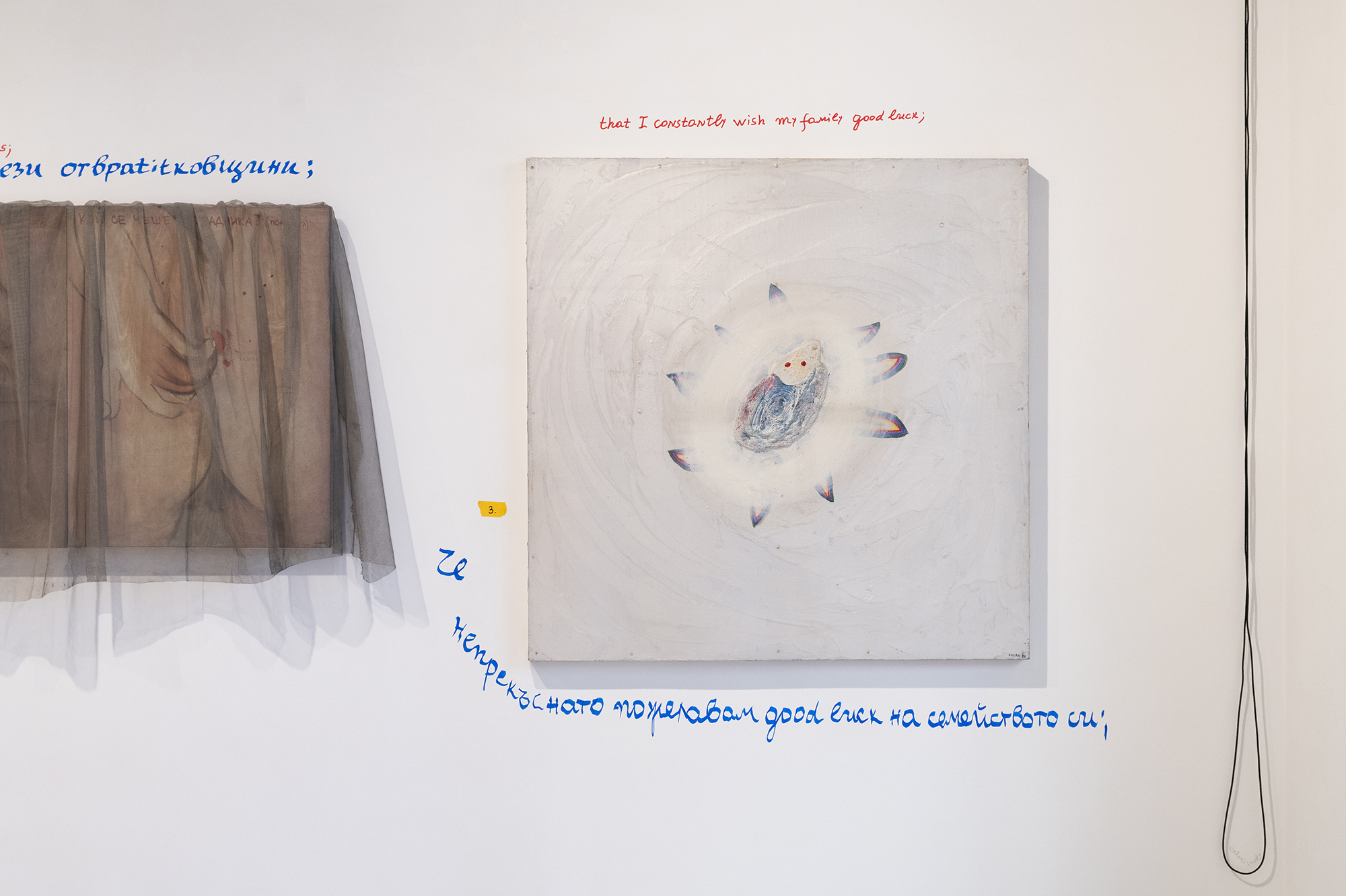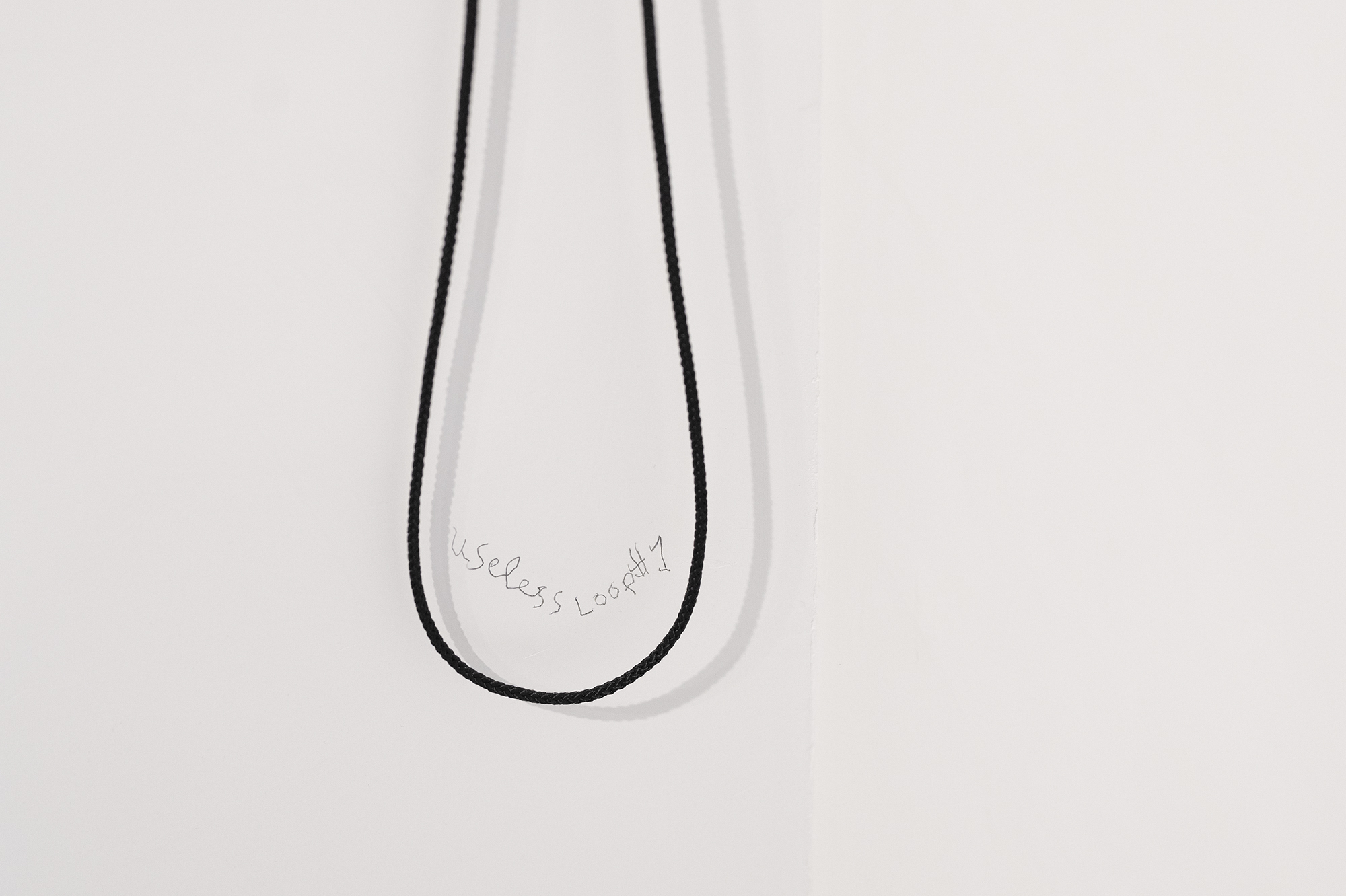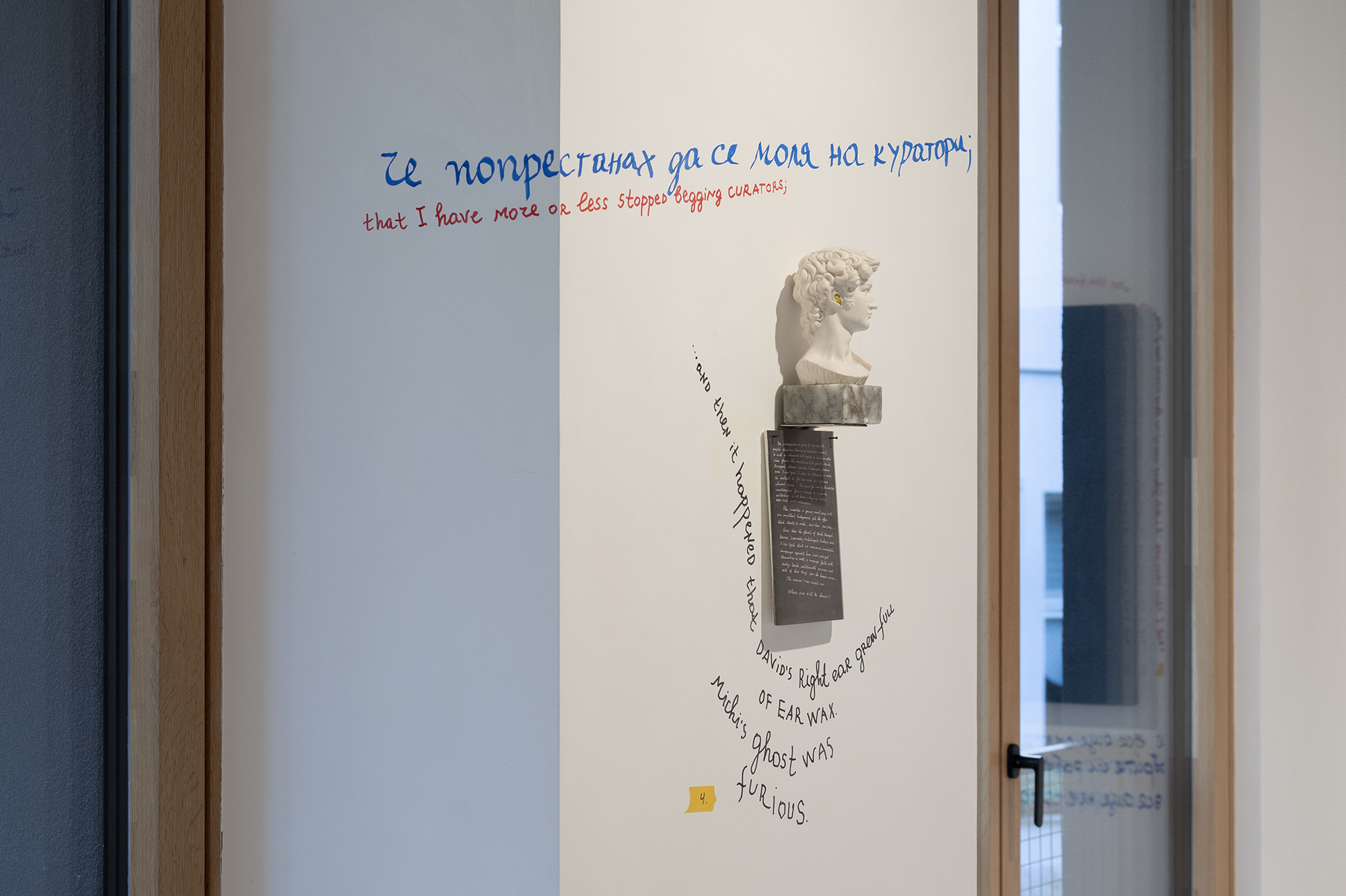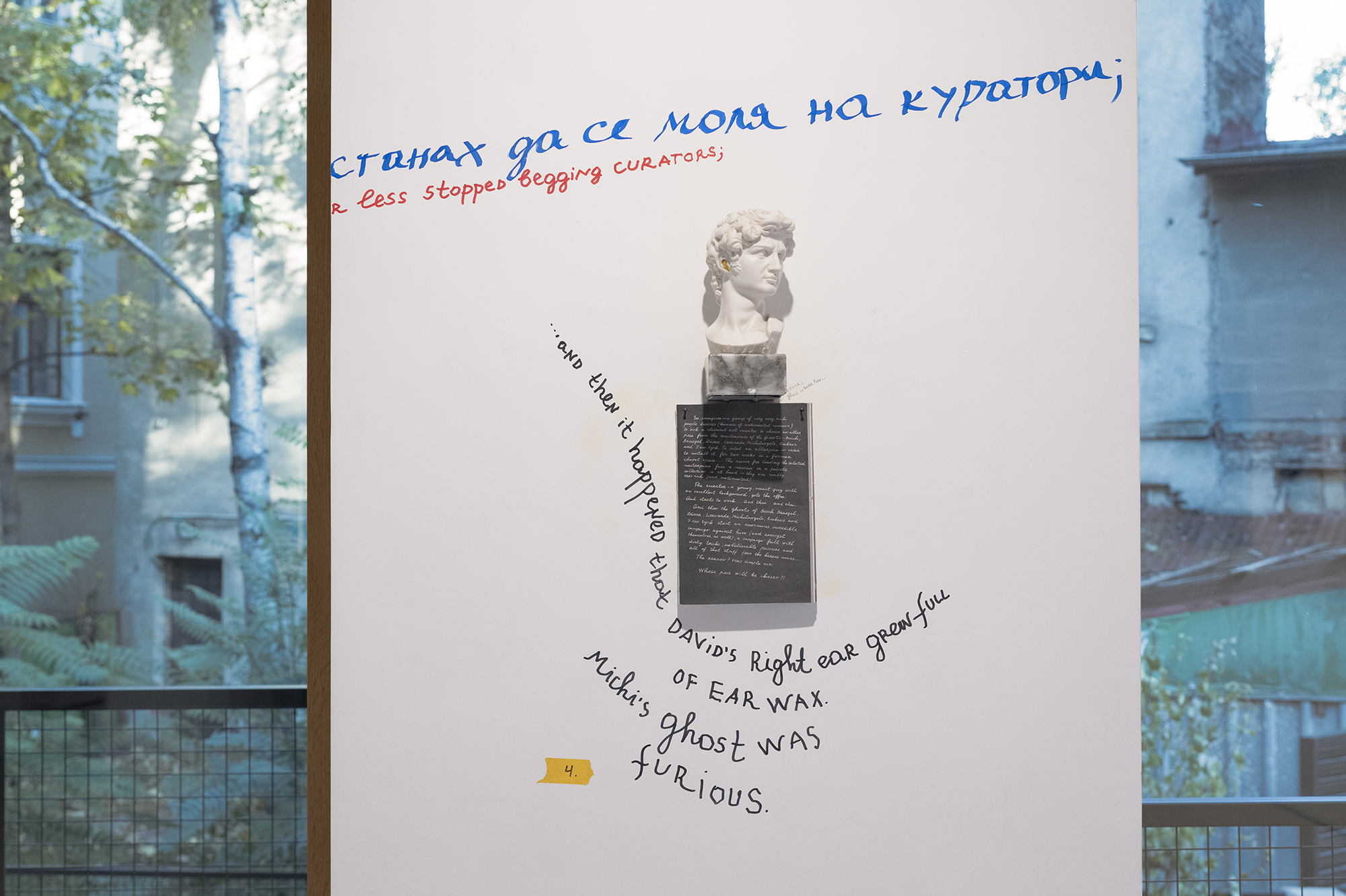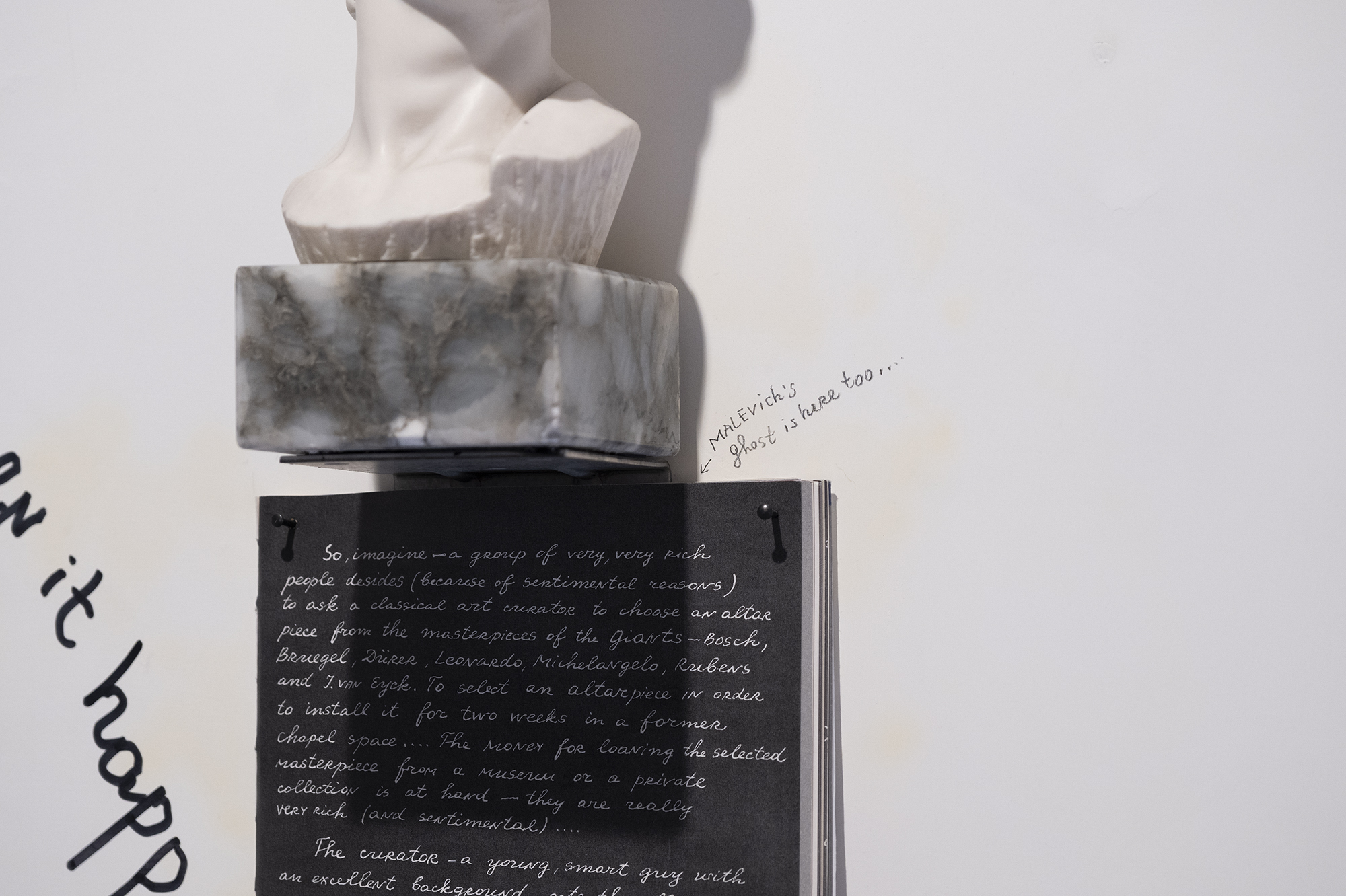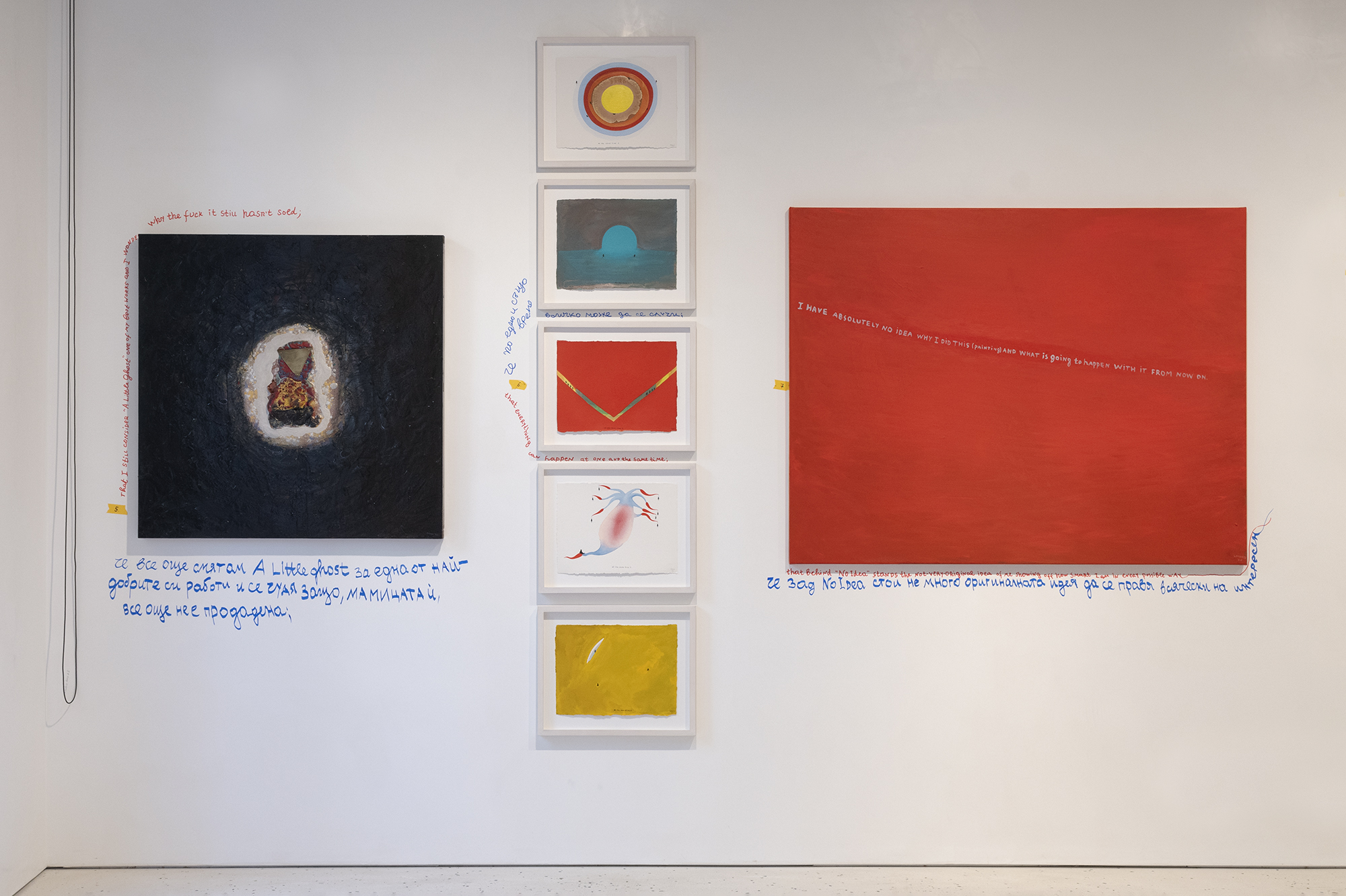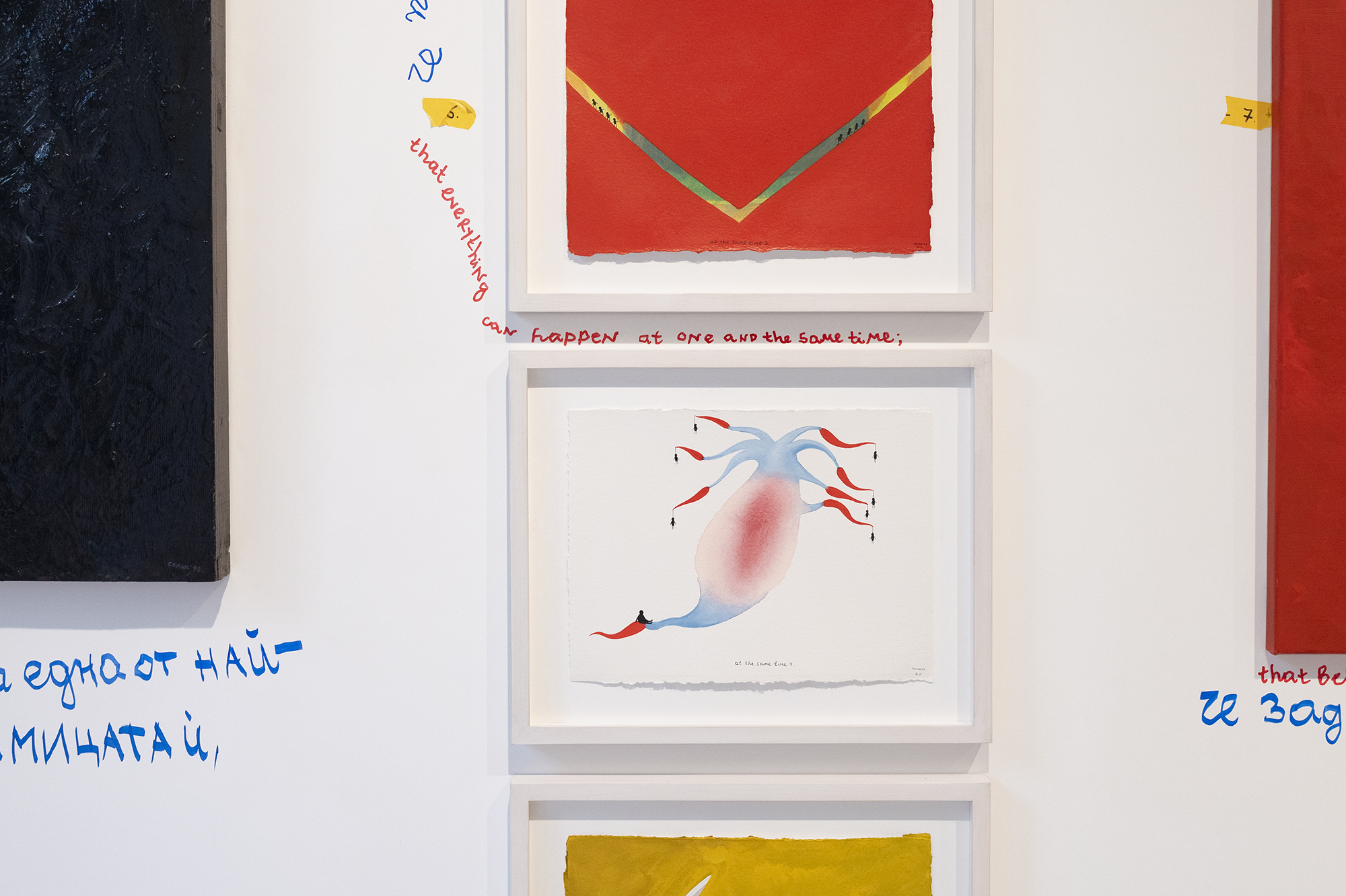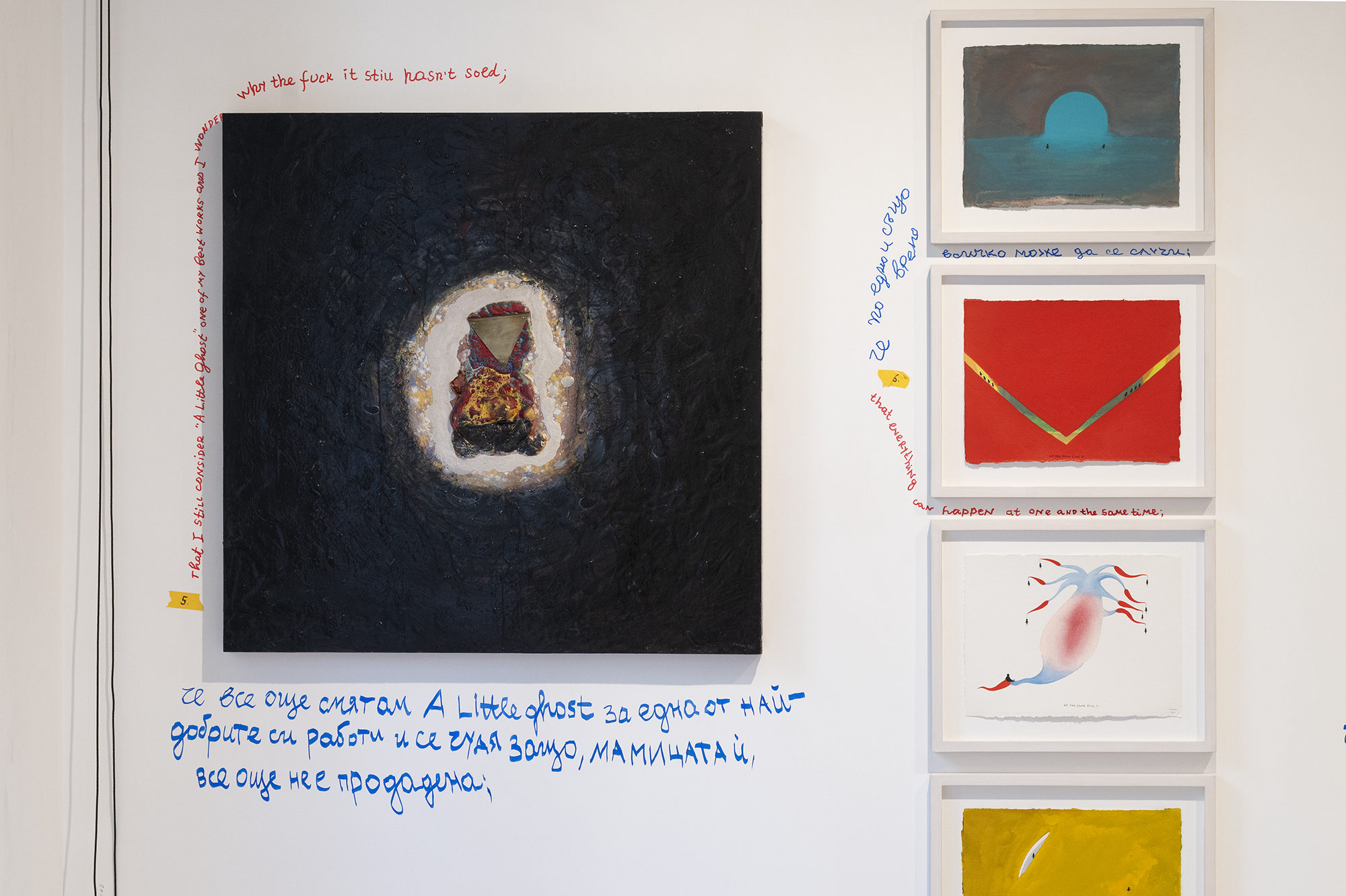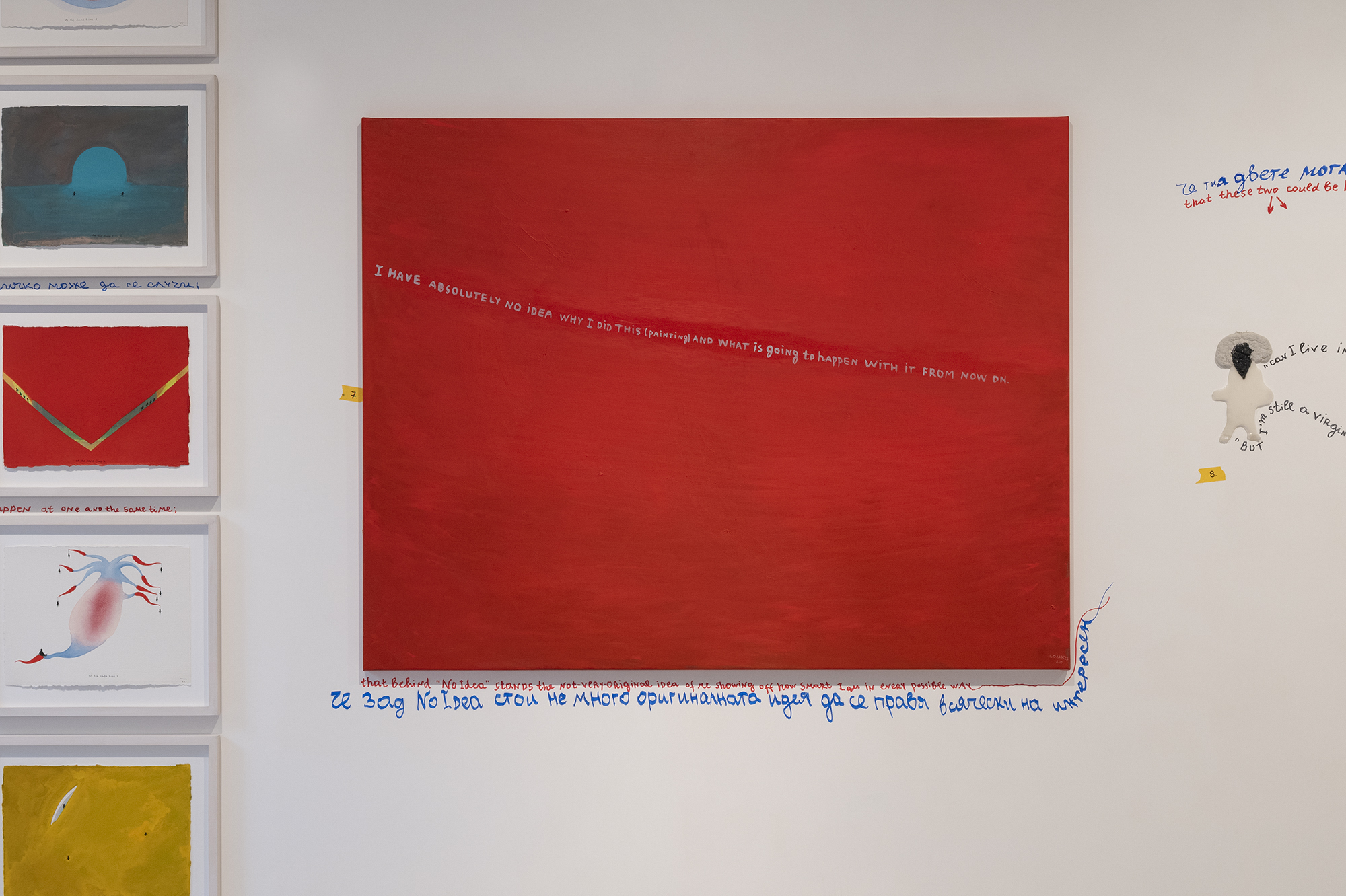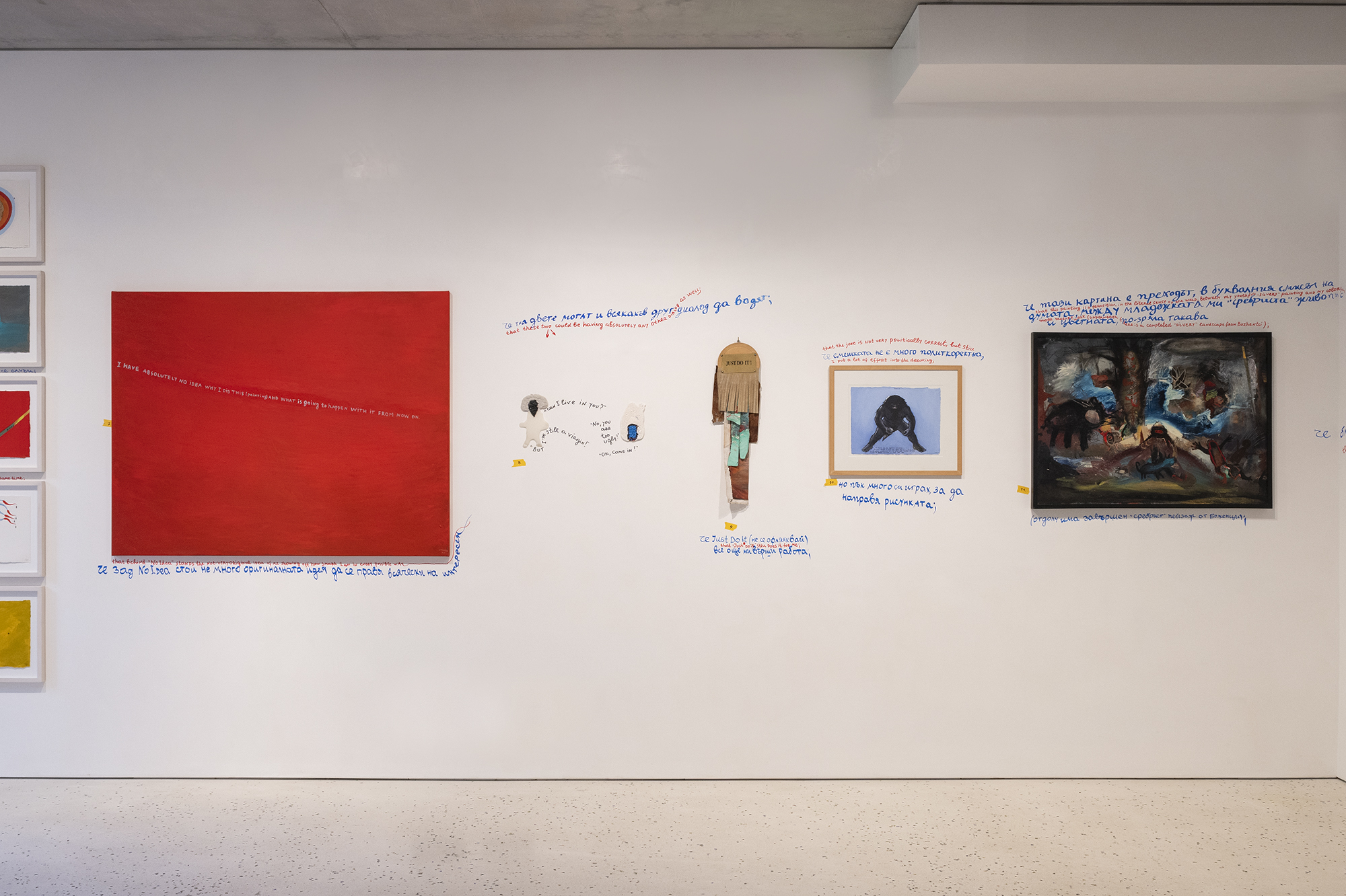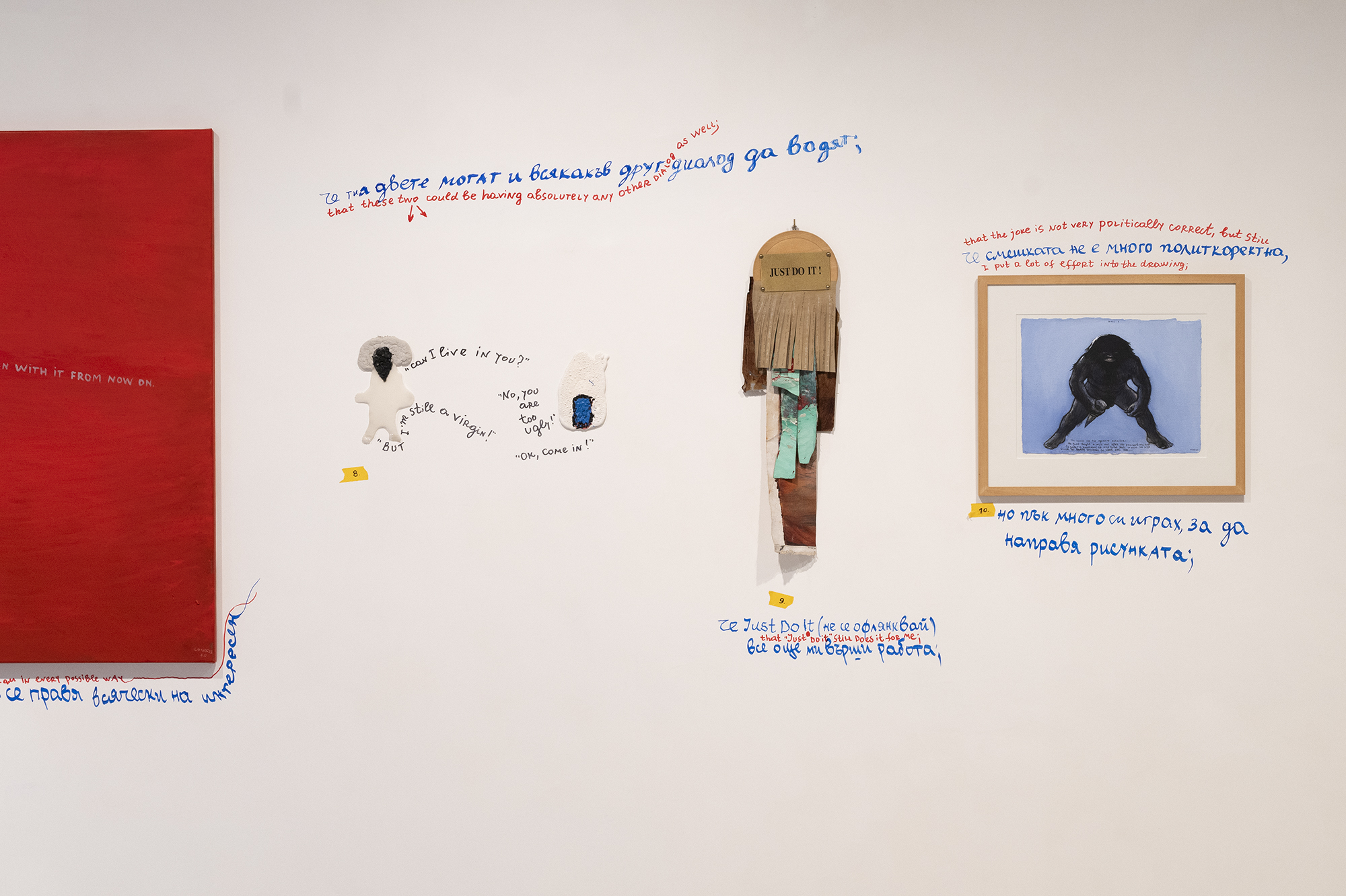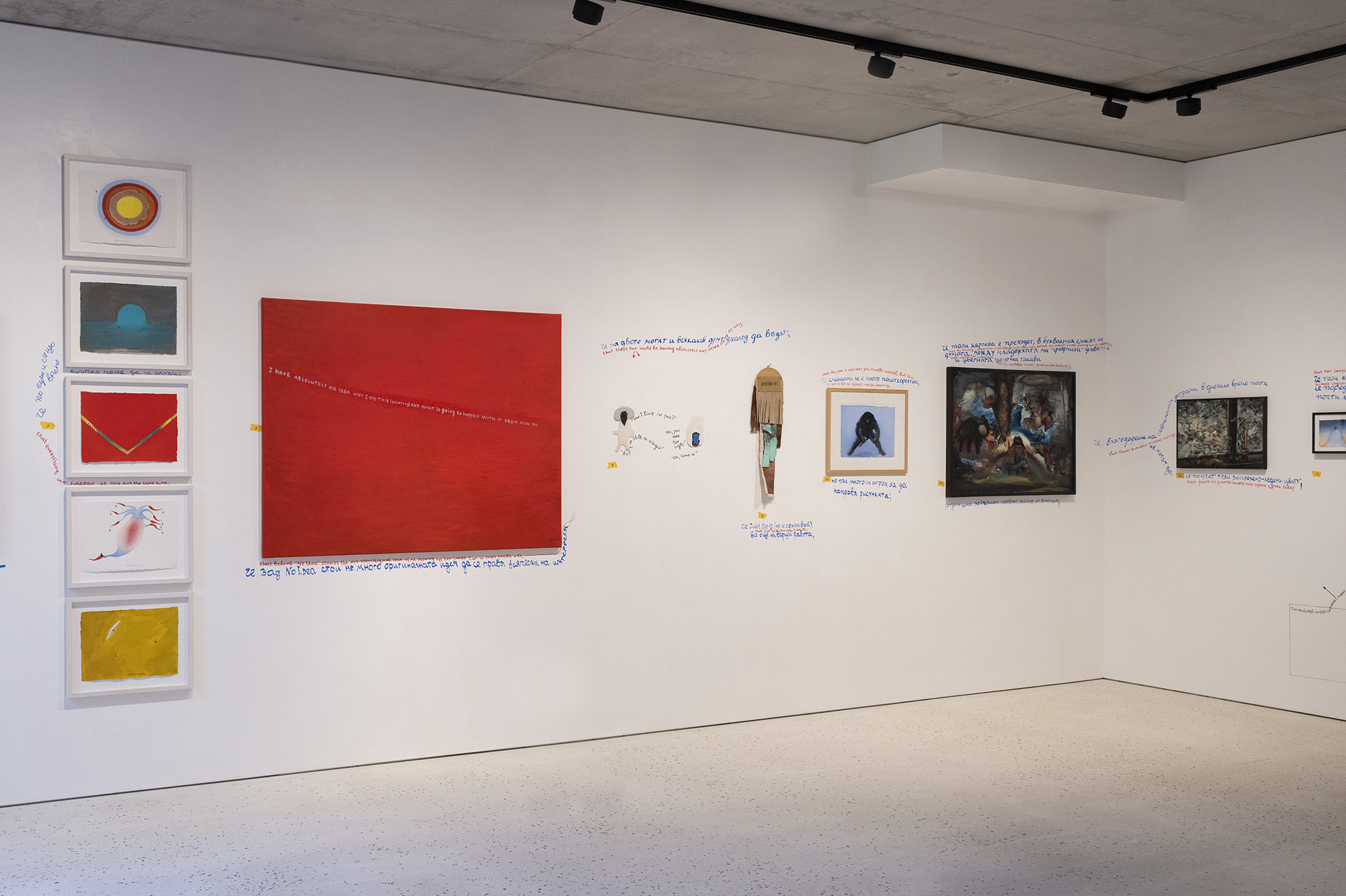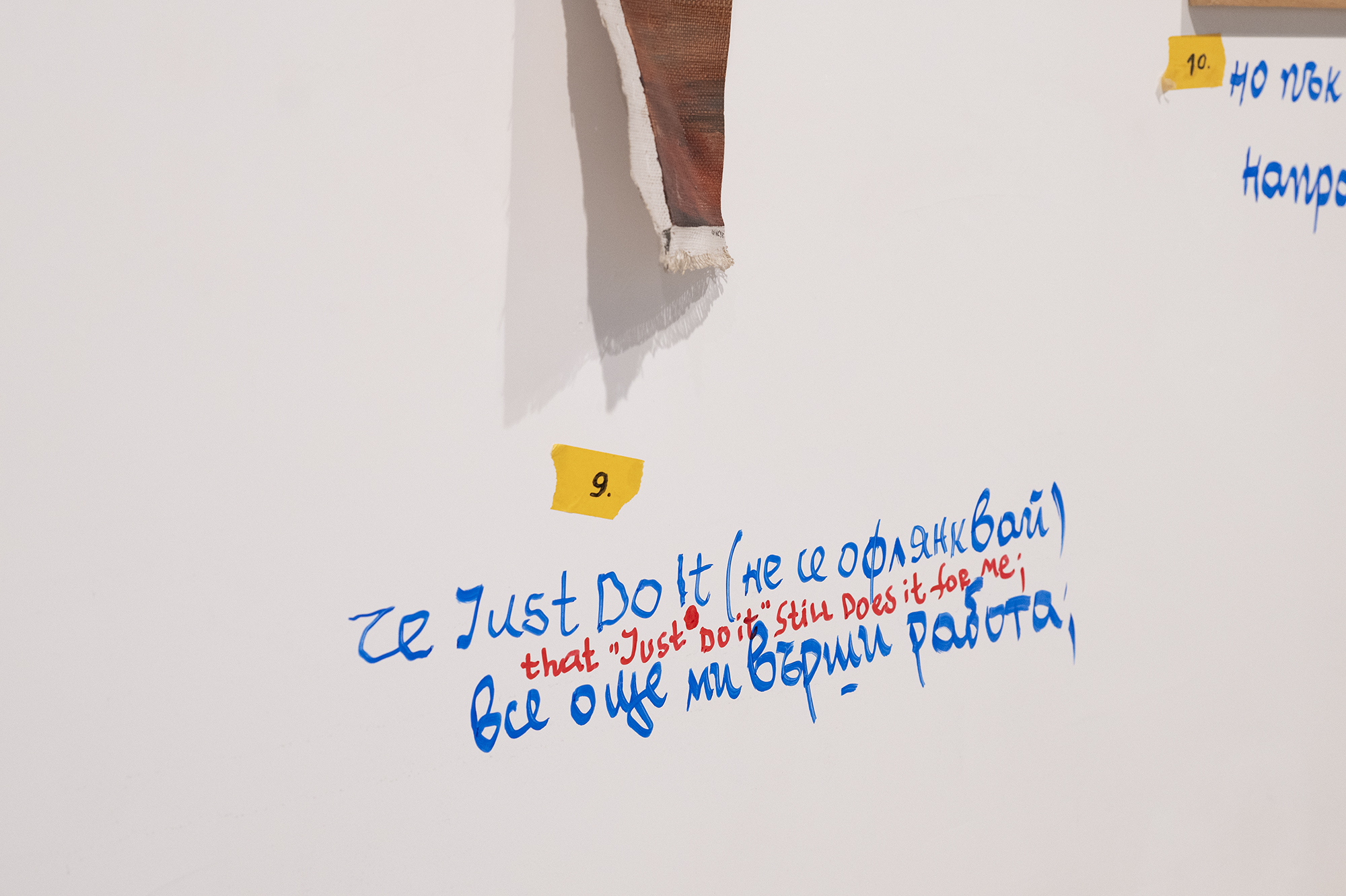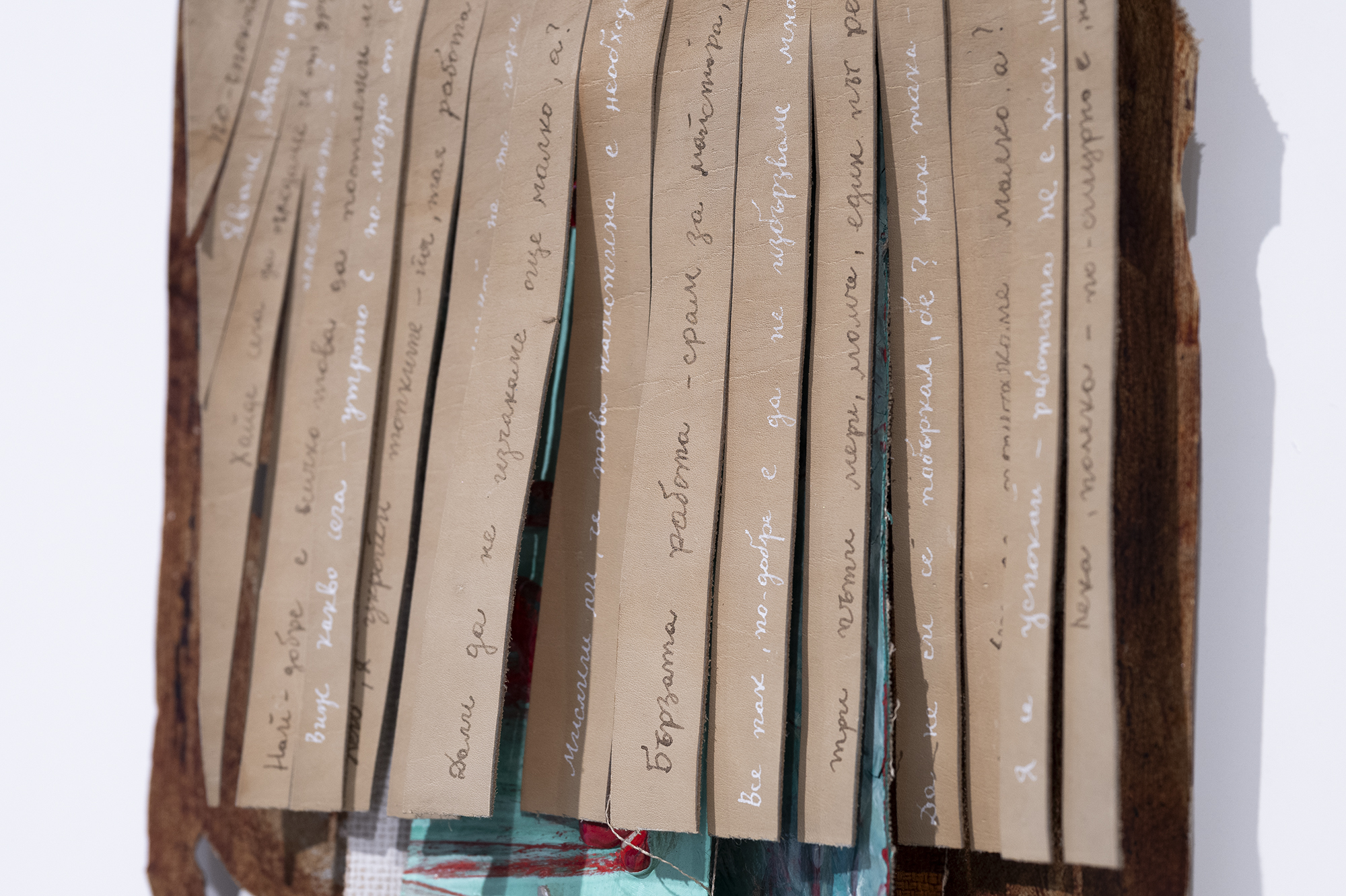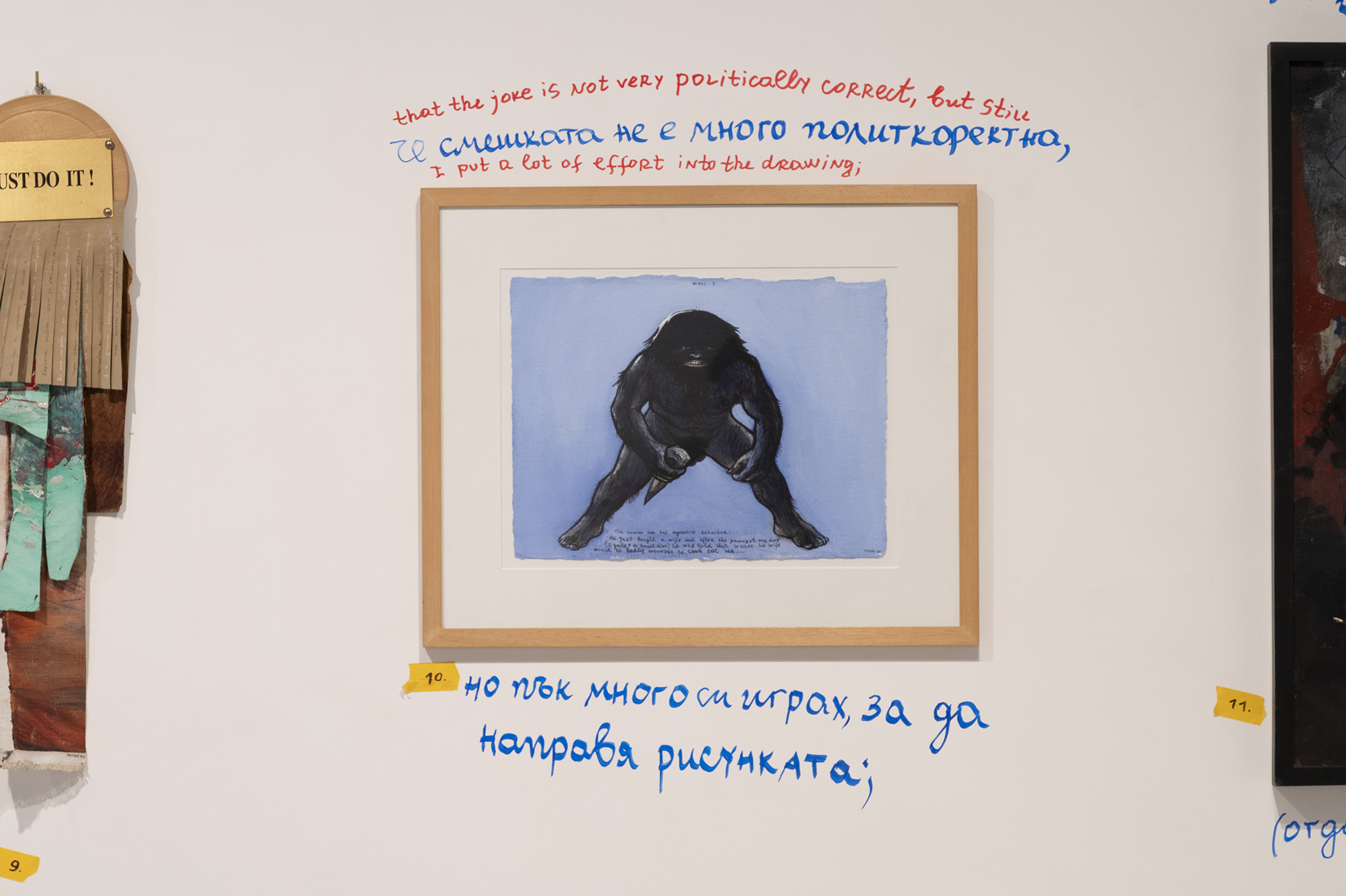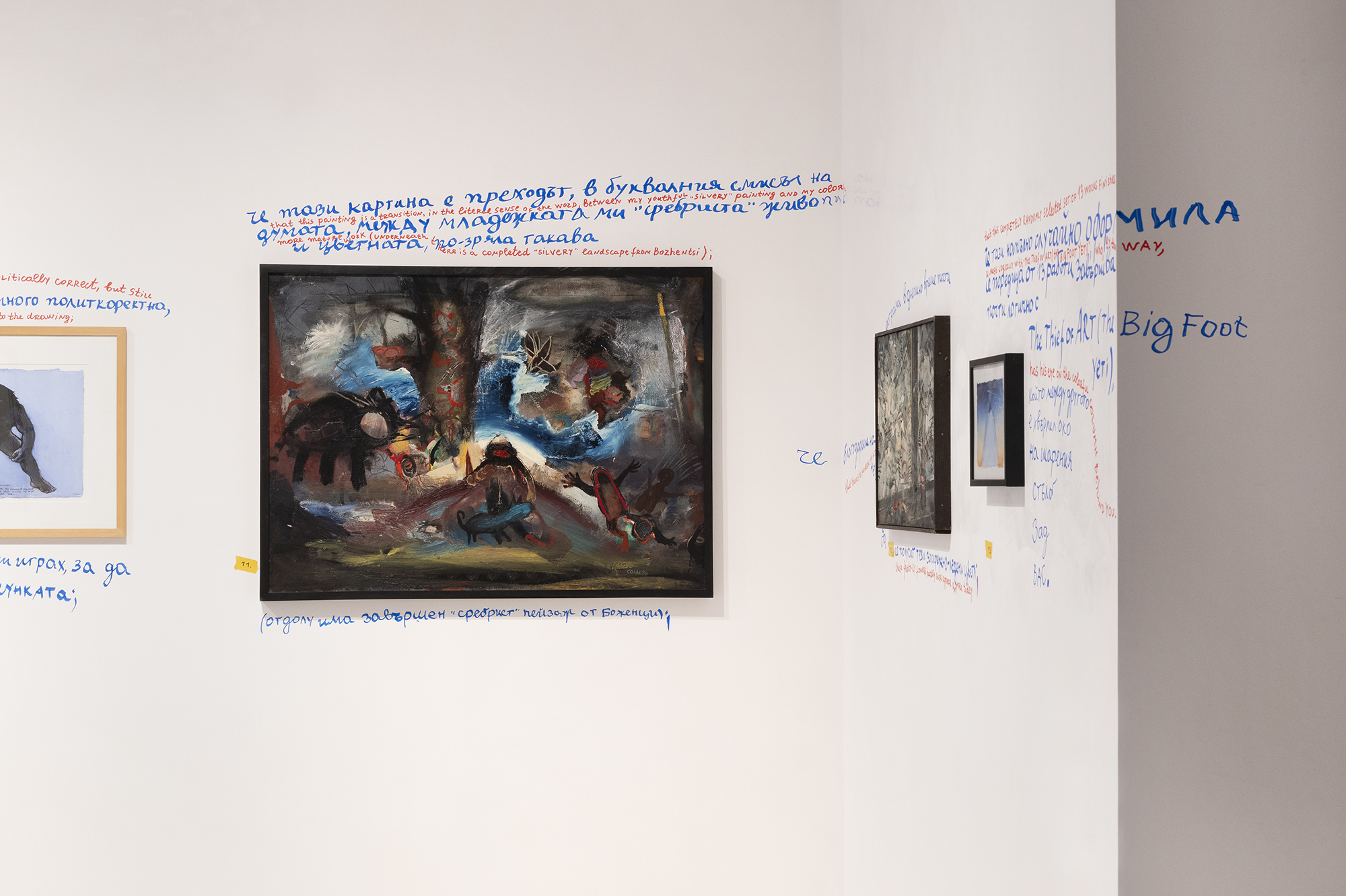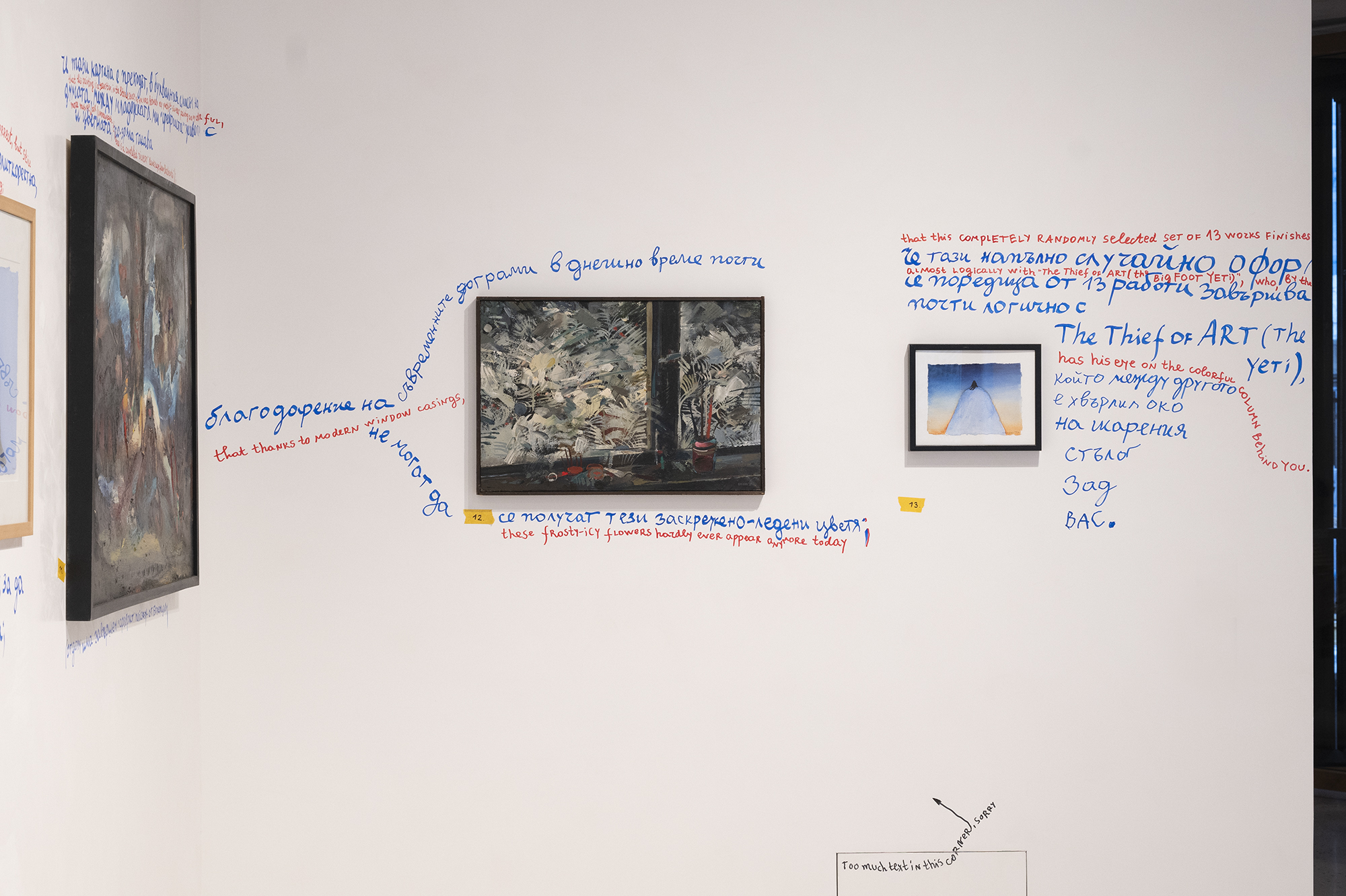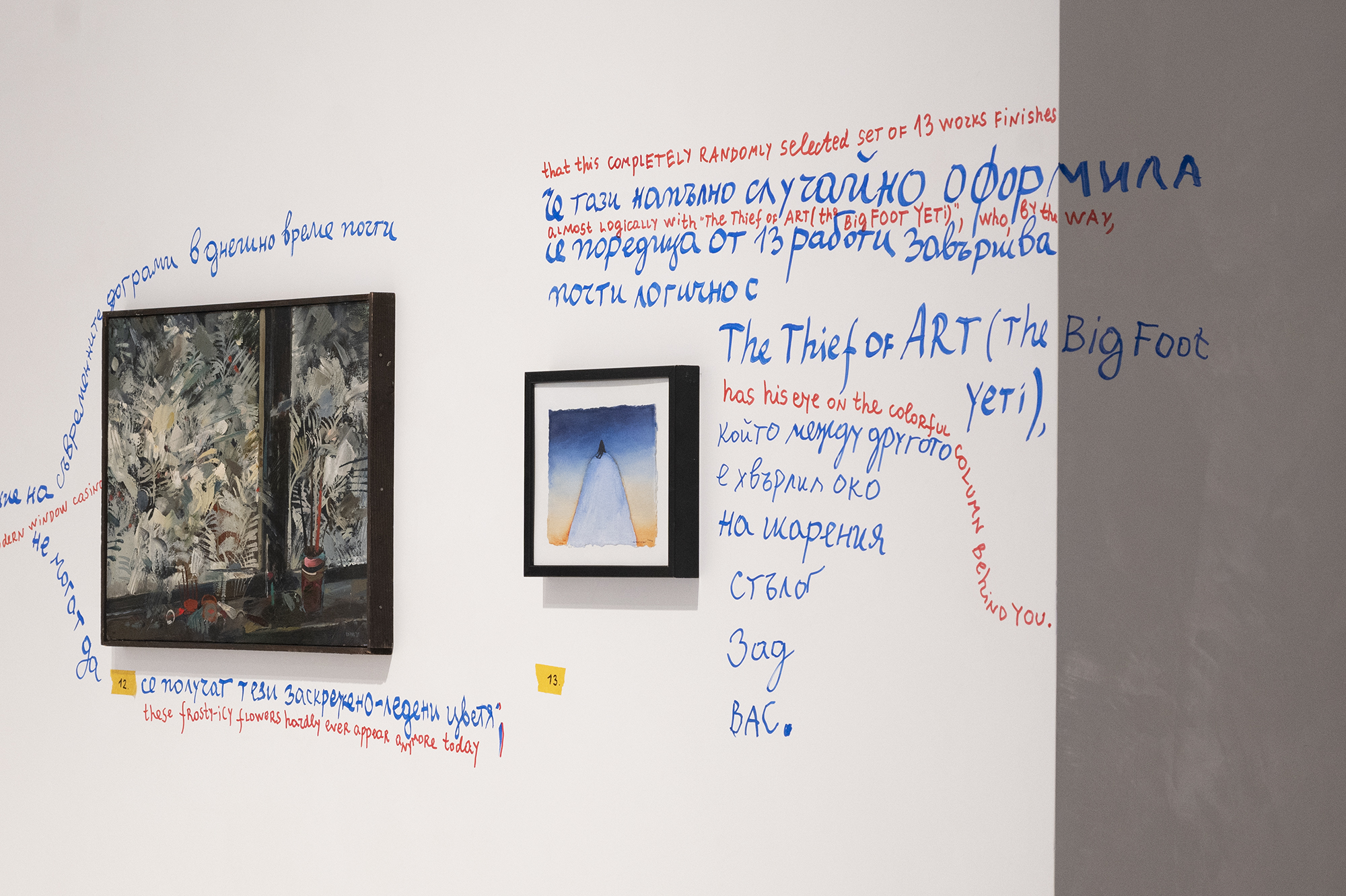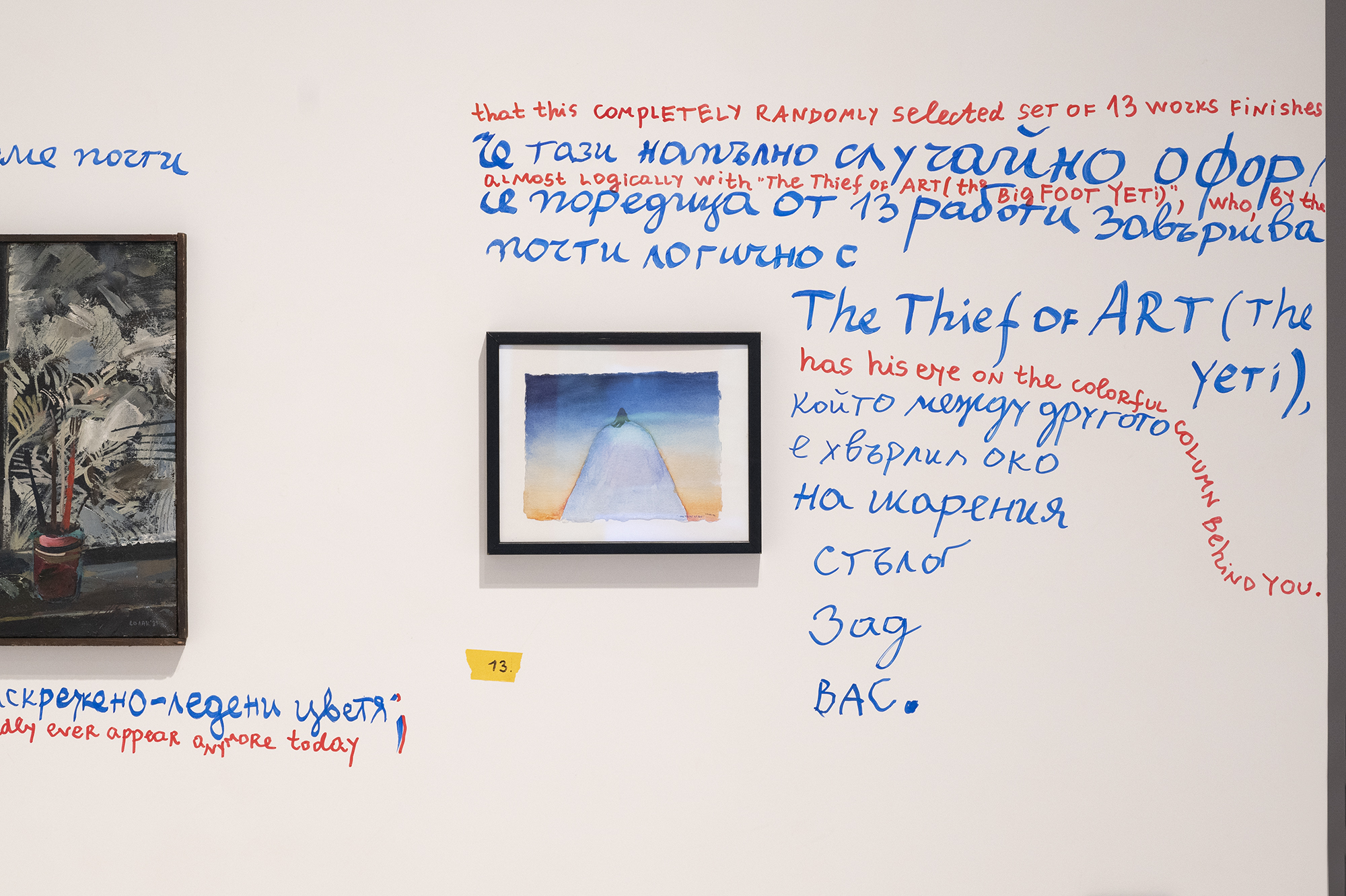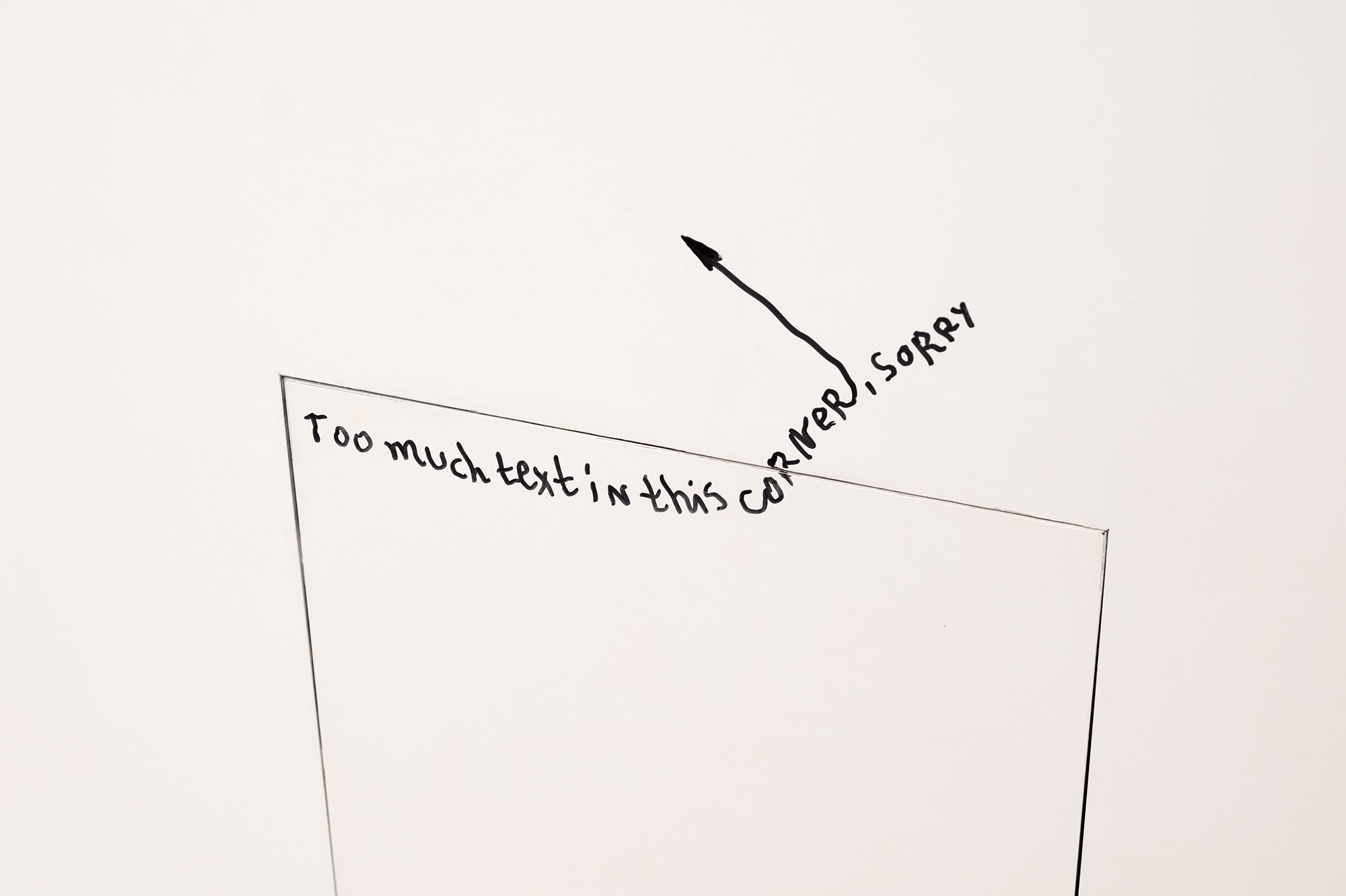Random Jumble
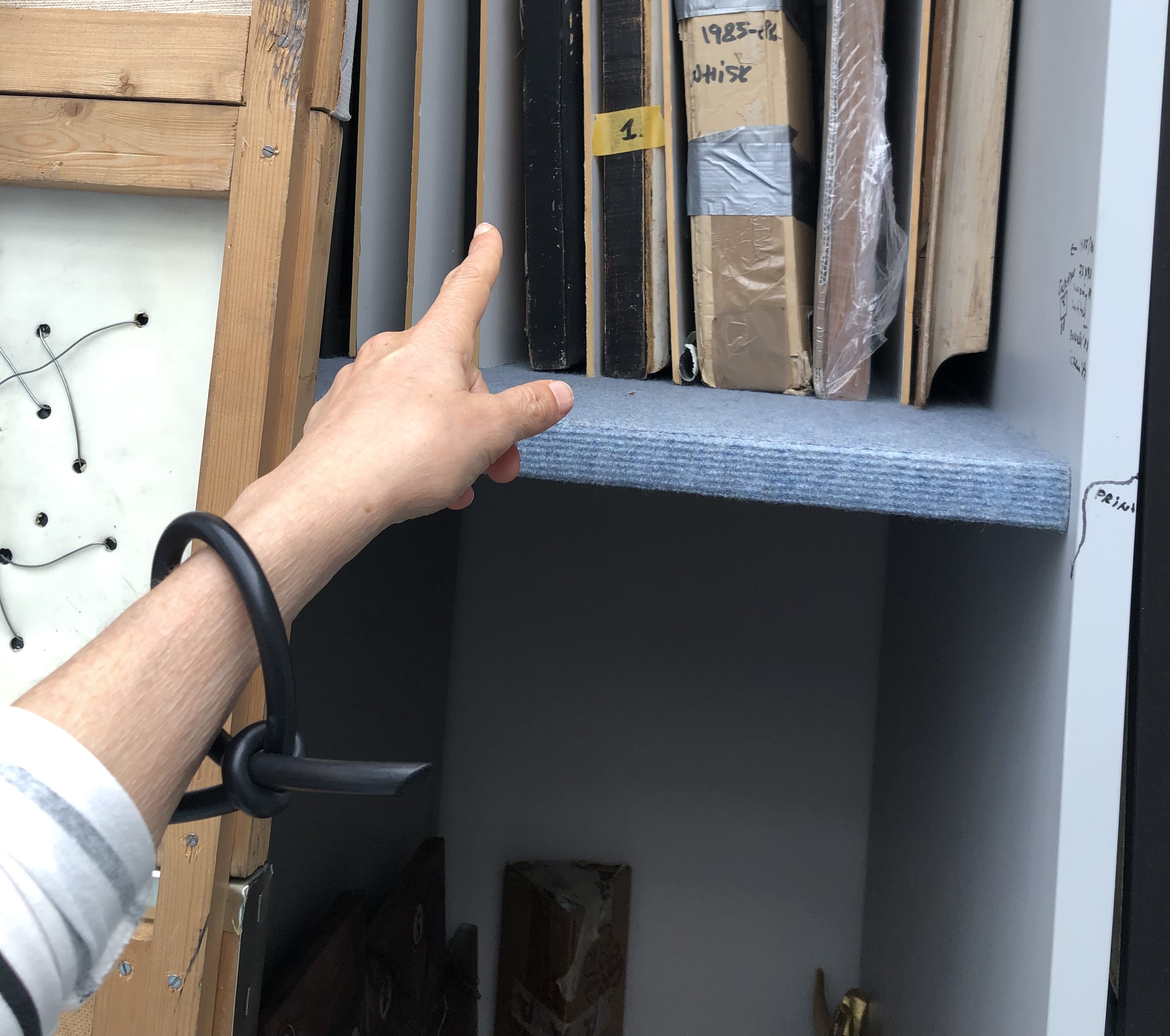
Sarieva/Gallery has the pleasure of presenting the solo exhibition “Random Jumble” by the world-renowned Bulgarian artist Nedko Solakov at the Sarieva/Gallery in Sofia.
Following “A Sentimental Show” (together with Dimitar Solakov and Mityo Solakov), 2013; “Nature,” 2016; and “(almost) Paintings,” 2019, this is Nedko Solakov’s fourth exhibition with the gallery and the first in its Sofia space. The artist has taken part in a series of the gallery’s initiatives and exhibits and has been represented by it since 2014. Even though the gallerists know the approach, work and context around Solakov very well, it turns out he always can find a way to surprise them.
Nedko Solakov is famous in the world of contemporary art for his stories, which he tells through drawings, texts, paintings, objects, sculptures and installations. An essential part of his work is his sense of humor. However, his body of work and achievements, which have become a high bar for success, are always taken seriously. The spontaneous lightness and boldness with which the artist creates his work and guides the creative process might remain invisible. So it seems the goal of the current exhibition is precisely to reveal that invisible Nedko Solakov. But how can you make the invisible visible? By first closing your eyes, it turns out.
When Katrin and Veselina Sarievi arrived at Nedko Solakov’s studio, they had no idea they would select the works for the upcoming exhibition without seeing them. The artist had prepared yellow stickers numbered 1 through 13 and invited his gallerists to use them to identify the works selected for the exhibition, but without moving them from their places on the shelves. Quickly, in synch and guided by intuition alone, they picked out all the works, orienting themselves only from the backs, the frames, the size and trying to guess the technique.
Completely randomly, the Sarievi managed to include in the exhibition paintings, drawings and objects from the artist’s earliest works in the ‘80s until today. The order of the selection of works was also crucial for the way they will be arranged in the gallery – from left to right, they will entirely follow the order in which they were chosen, from 1 to 13. Displayed in this way, the works offer knowledge about the artist’s works, yet not in a narrative, linear and holistic way, but rather fragmentarily and in pieces – like various cracks through which we can peer into his oeuvre.
This playful whim, which the artist has used for the first time, deconstructs the conventions of selection. This letting go of control is valid for both sides – for him as well as for the gallerists. And here, we cannot help but wonder – is such a “random” exhibition representative of the artist’s work? Would this approach work with every artist? Which is the artistic fact – the process of selection or the exhibition itself? How do these completely randomly selected works function together?
The exhibition also makes a joking nod towards prejudices about and mistrust of contemporary art, which see it either as not serious or as too uptight, feeling the need to constantly explain itself and to formulate conceptions.
Of course, it is precisely the trust between the artist and the gallerist, the latter’s deep knowledge of the artist’s work that gives them the freedom to choose “with closed eyes.”
“Random Jumble” is a joke, a game, but it is also freedom. This is an exhibition that contains many things at once – frivolity, joy, humor and discovery.
-
Translation: Angela Rodel
Exhibition "Random Jumble" by Nedko Solakov, Kultura.BG, Nedko Solakov and Vesselina Sarieva in interview – 10.10.2024 on BNT
The Random Jumble of Nedko Solakov, A game of choice and a "lottery" of confessions - there is nothing accidental in the artist's new exhibition, with which he offers us a liberation of feelings; Author: Diana Popova, art historian, curator and critic, Manager (on paper and print), October 2024
Nedko Solakov at Sarieva at DOT Sofia, November 22, 2024, Art Viewer
-
Nedko Solakov A Fairy Tale, 1986 oil on canvas
73 x 100 cm -
Nedko Solakov A Little Ghost, 1990 white ink, oil, PVC, metal, mixed media on plywood
97 x 97 x 8 cm -
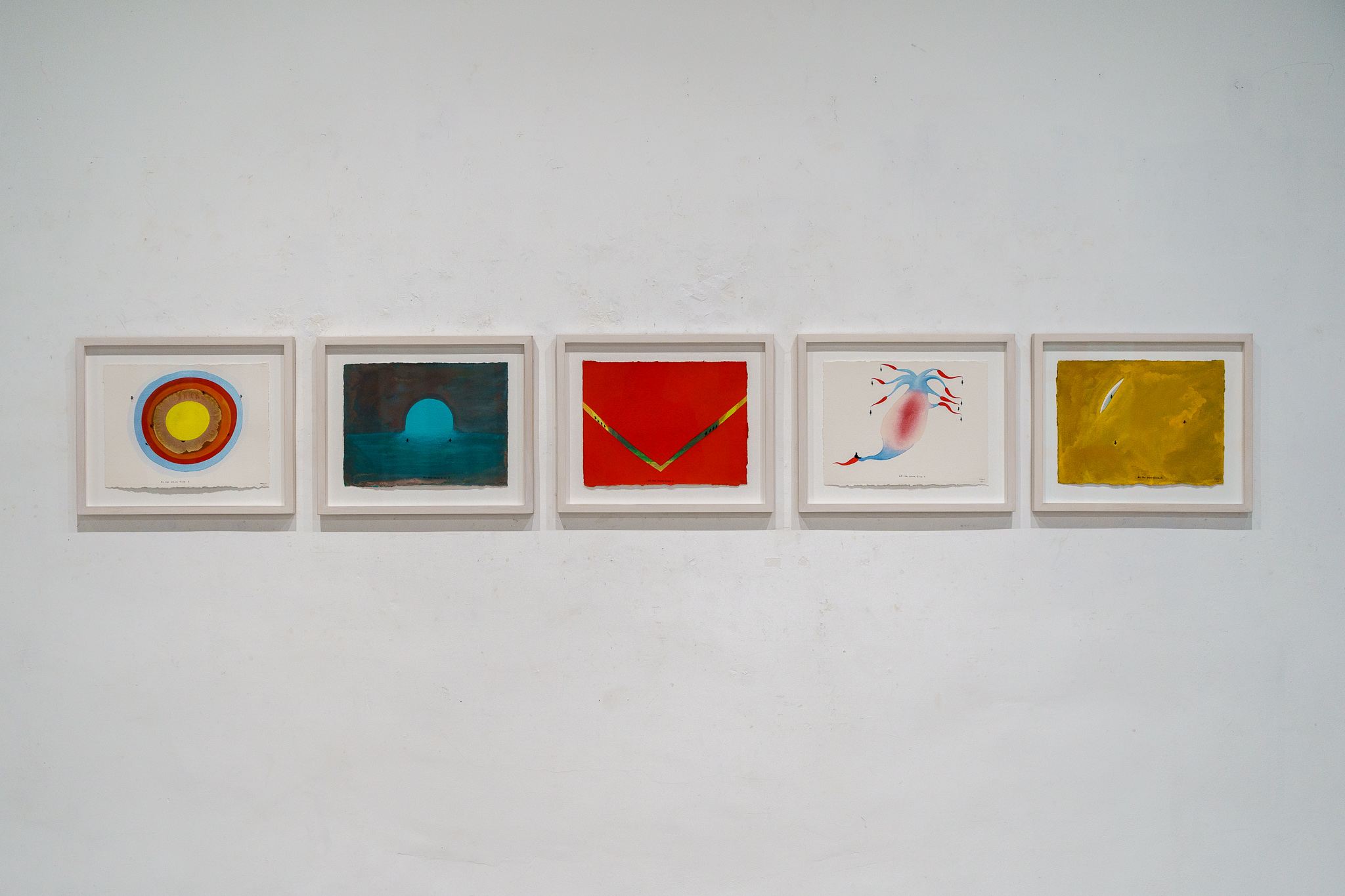 Nedko Solakov
At the Same Time, 2024
watercolor and black ink
Nedko Solakov
At the Same Time, 2024
watercolor and black ink
series of 5 drawings
28 x 39 cm each -
Nedko Solakov Catastrophe, 1988 oil on canvas
73 x 92 cm -
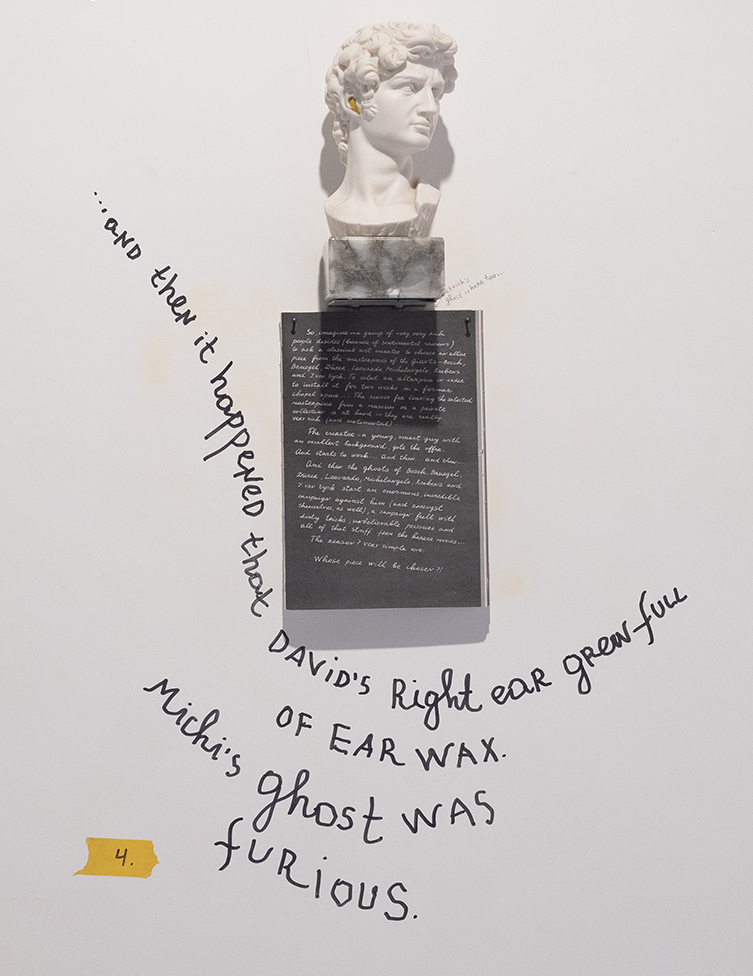 Nedko Solakov
David’s Ear Problem (from Mr. Curator, please….), 1994-1995
a souvenir head of David by Michelangelo, unidentified yellow substance, text on wall
Nedko Solakov
David’s Ear Problem (from Mr. Curator, please….), 1994-1995
a souvenir head of David by Michelangelo, unidentified yellow substance, text on wall
22 x 11 x 10 cm -
Nedko Solakov Good Luck, 1990 oil, PVC, mixed media on plywood
97 x 97 x 7 cm -
Nedko Solakov Intimacy, 1989 graphite, oil and textile on canvas; polyptych in three parts
approximately 80 x 170 x 15 cm all together -
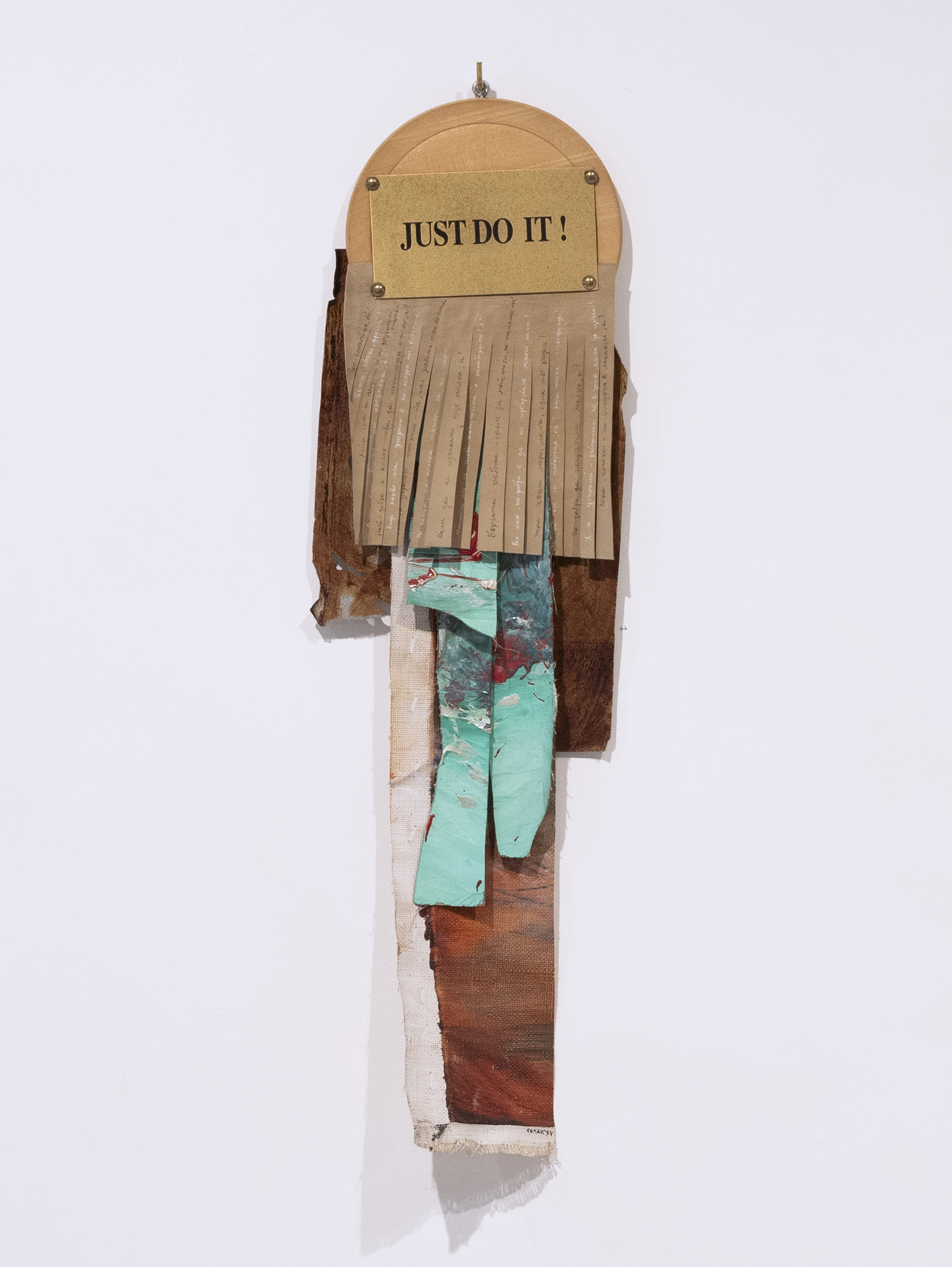 Nedko Solakov
Just Do It (from Bulgarian-American Souvenirs), 1994
leather, wood, metal, cutouts from a destroyed painting; texts with sepia and white ink
Nedko Solakov
Just Do It (from Bulgarian-American Souvenirs), 1994
leather, wood, metal, cutouts from a destroyed painting; texts with sepia and white ink
71 x 21 x 5 cm -
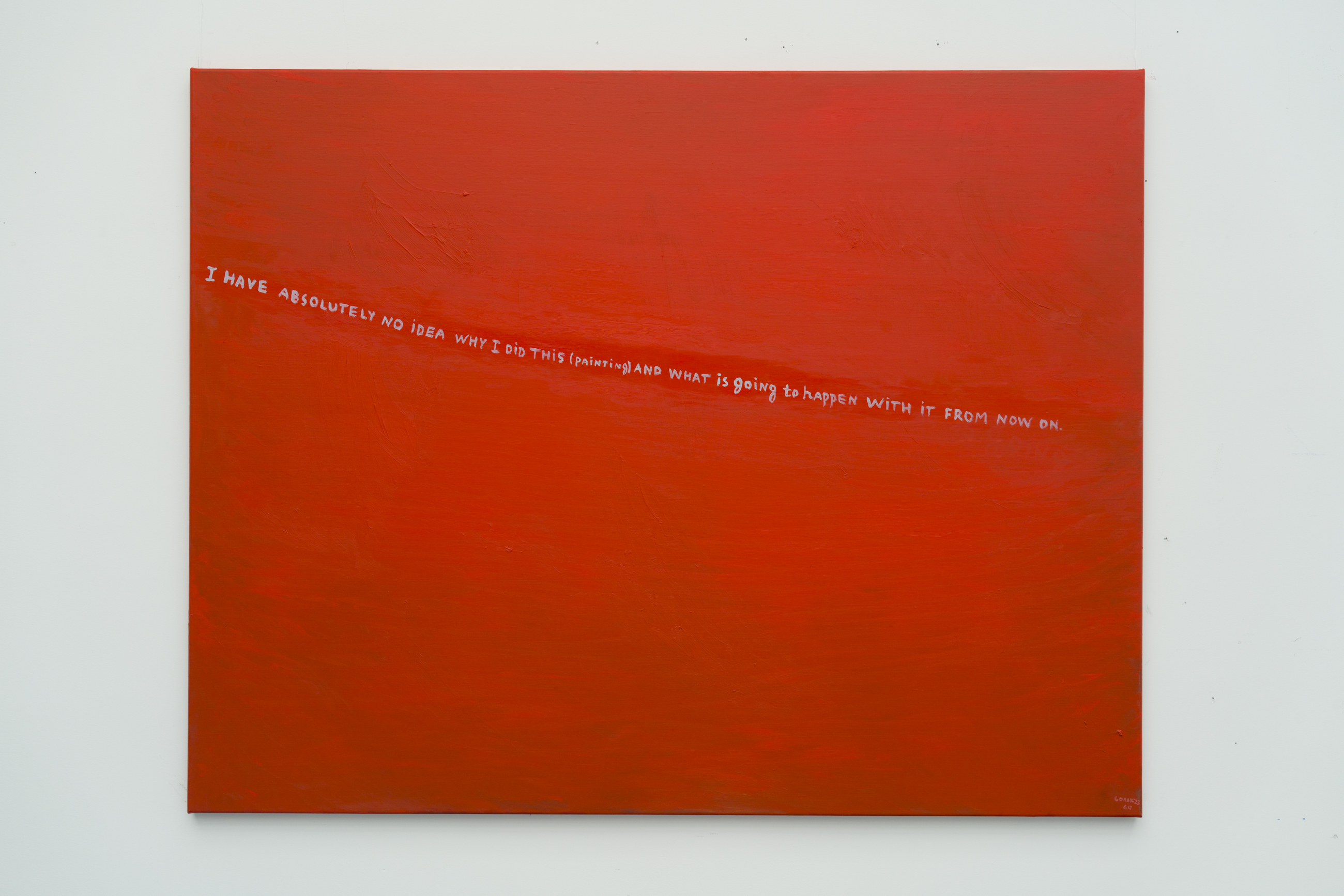 Nedko Solakov
No Idea, 2023
oil on linen
Nedko Solakov
No Idea, 2023
oil on linen
115 x 146 cm -
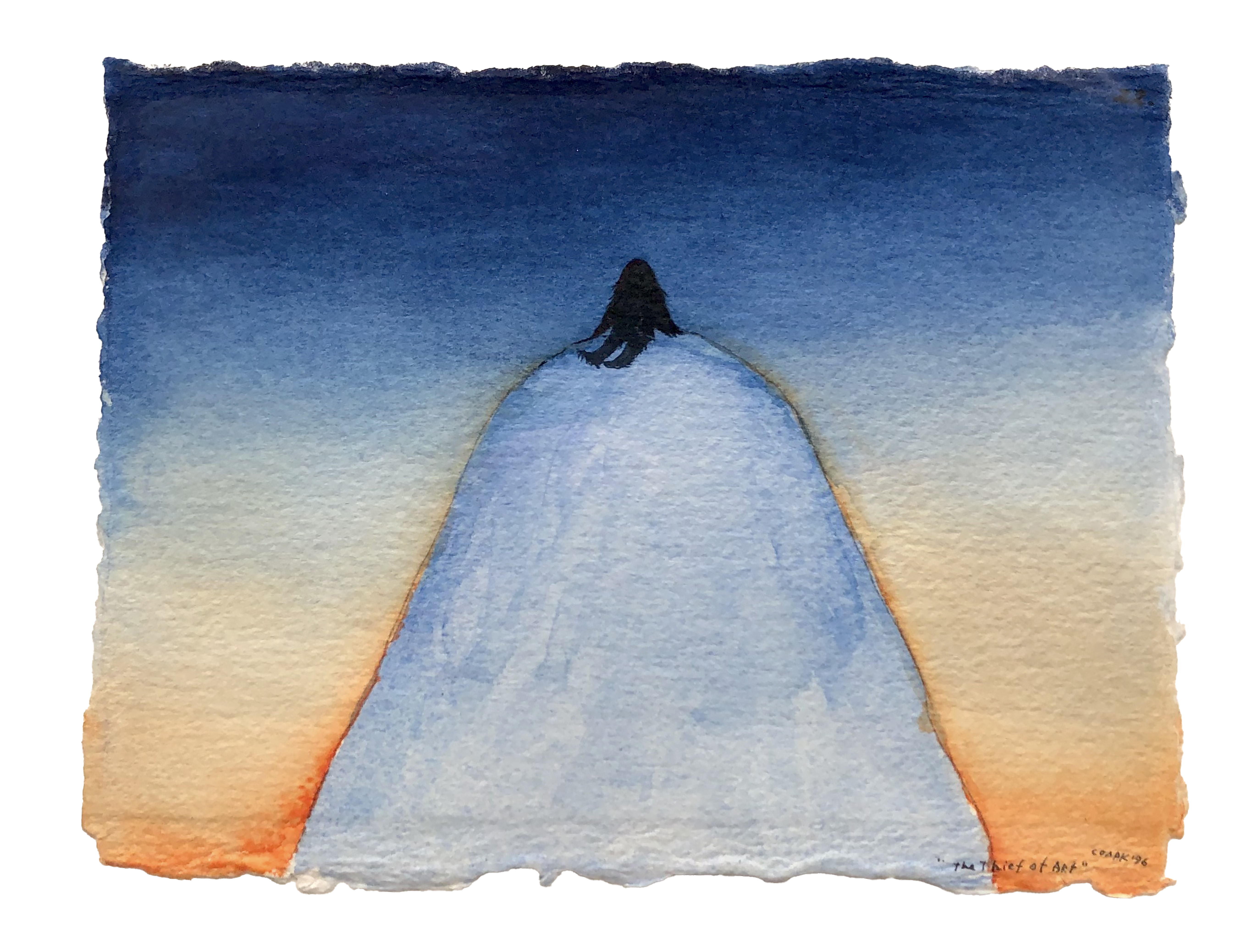 Nedko Solakov
The Thief of Art (The Big Foot Yeti) #22, 1996
watercolor and ink on paper
Nedko Solakov
The Thief of Art (The Big Foot Yeti) #22, 1996
watercolor and ink on paper
14 x 19 cm -
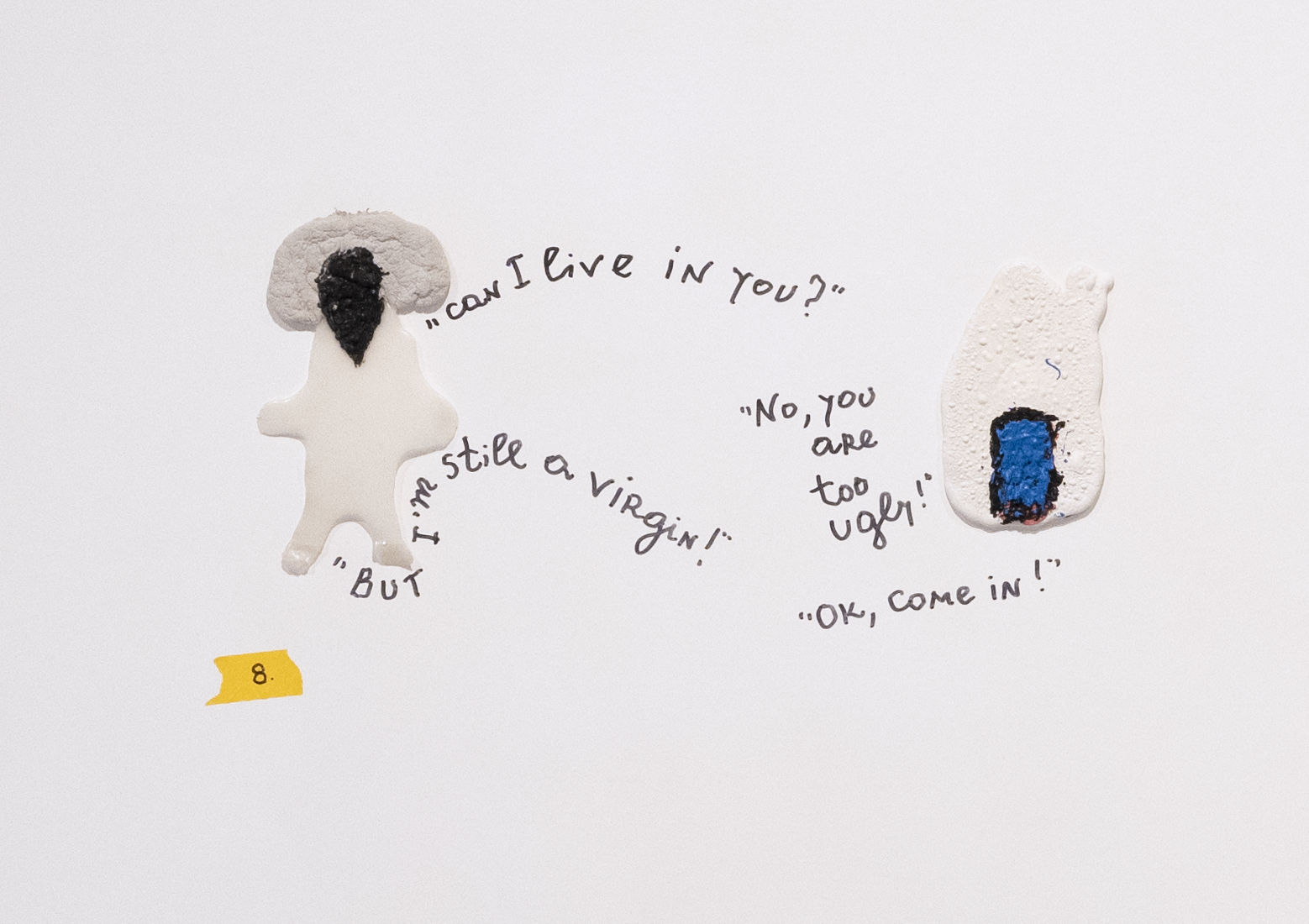 Nedko Solakov
Untitled, 1991-2024
PVC and permanent black felt-tip pen on wall dimensions variable
Nedko Solakov
Untitled, 1991-2024
PVC and permanent black felt-tip pen on wall dimensions variable
-
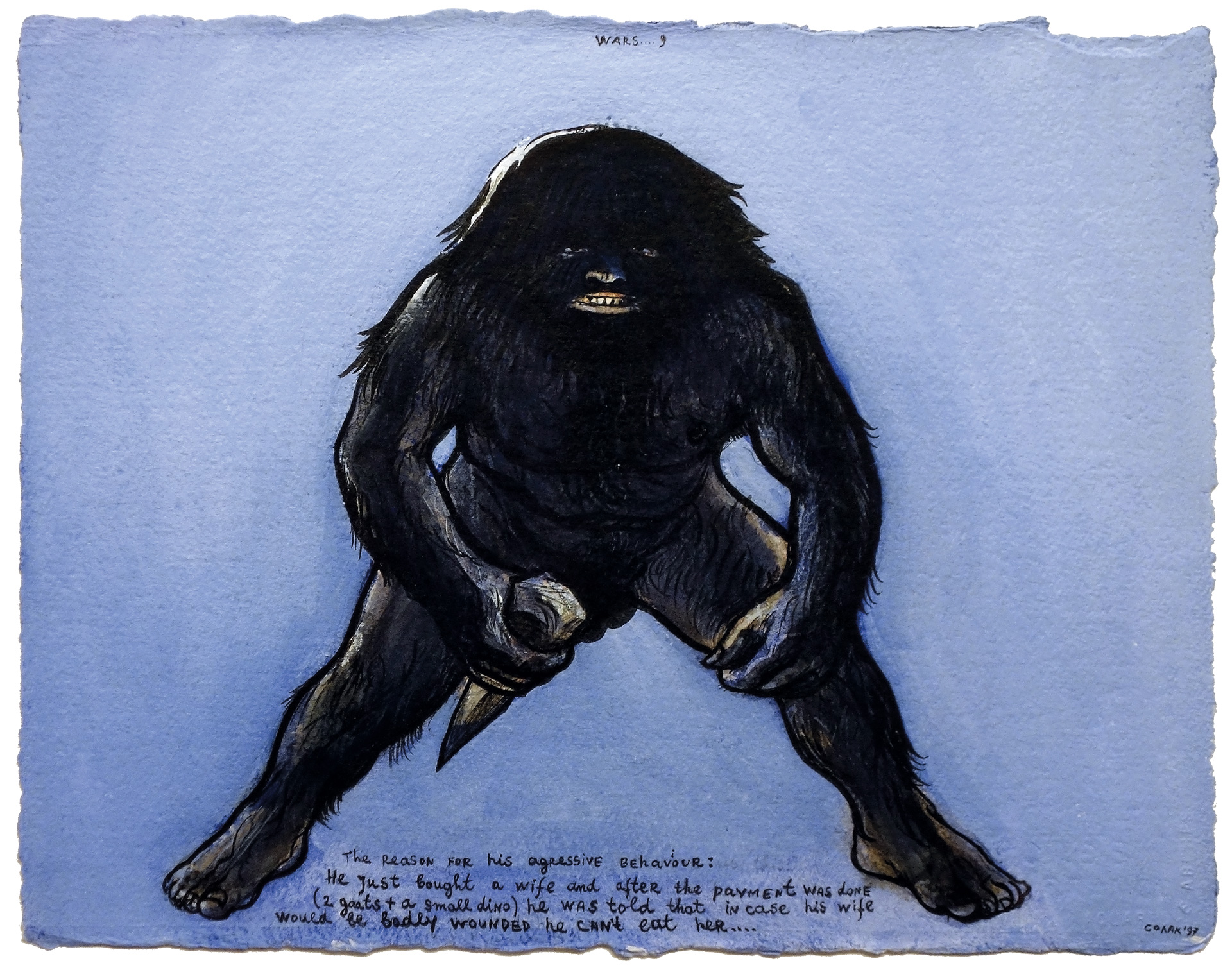 Nedko Solakov
Wars #9, 1997
watercolor and ink on paper
Nedko Solakov
Wars #9, 1997
watercolor and ink on paper
28 x 39 cm -
Nedko Solakov Window, 1981 oil on canvas
39 x 58 cm
